Do people still buy people movers? Or is it all SUV SUV SUV now? Honda thinks people movers are still relevant, and along with the Kia Carnival are sticking in there with a refresh of the Odyssey.
Is there still a market for a people mover? Honda sent us a top-spec L Sensing model to find out.
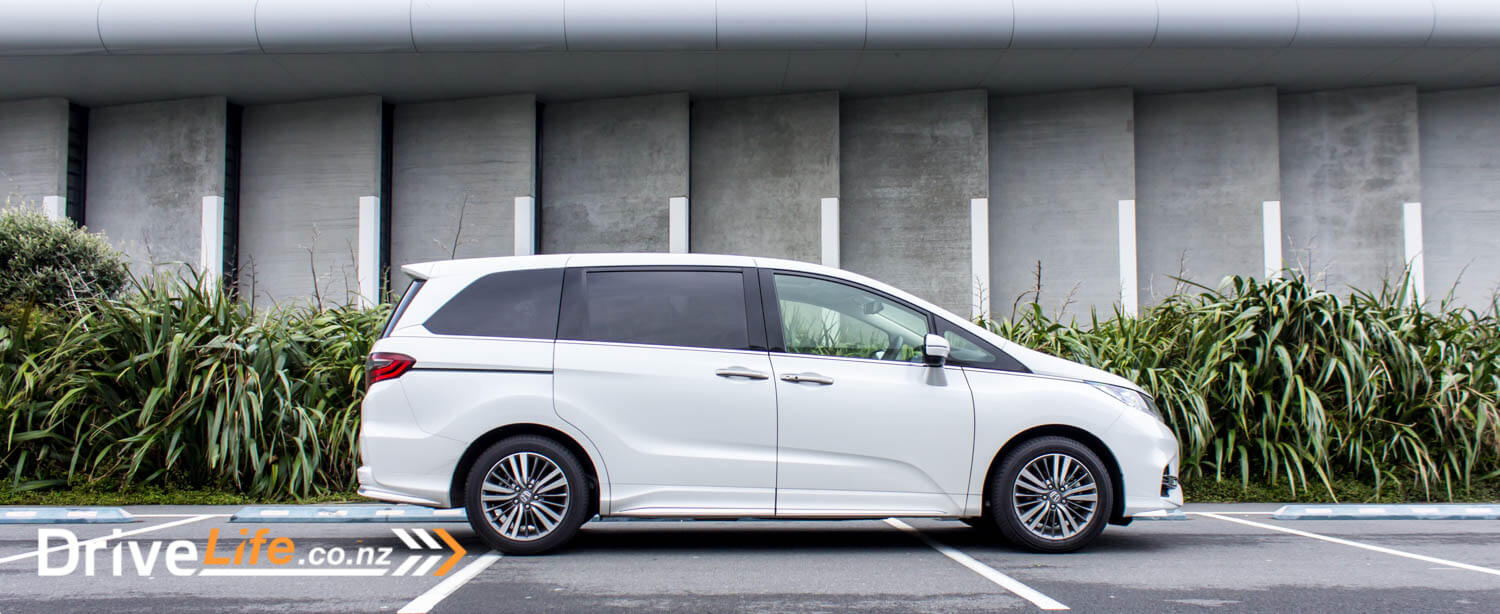
The Range
The key here is keeping it simple – there’s just two Odyssey models to pick from. The base model is the S, and the top-spec is the LS, or ‘L Sensing’ as Honda calls it.
As we know from previous Honda models, the ‘sensing’ part of the name refers to the extra safety features the car has, like adaptive cruise control and rear cross traffic alert for example. This is the first time the Odyssey has been offered with the Honda Sensing safety systems.
The base Odyssey is an 8-seater car, and both models share the same 2.4-litre, four-cylinder petrol engine and CVT transmission with 7-speed mode.
Standard, there’s LED DRLs LED tail lamps, front fog lamps, dual sliding rear doors, hill start assist, a 7” touchscreen that SatNav-capable if you have an iPhone and have a paid SatNav app called Sygic, CD player, Siri hands-free, 6-speaker audio, power-folding mirrors, 3-single reversing camera with dynamic parking aid, a leather steering wheel, and cloth trim.
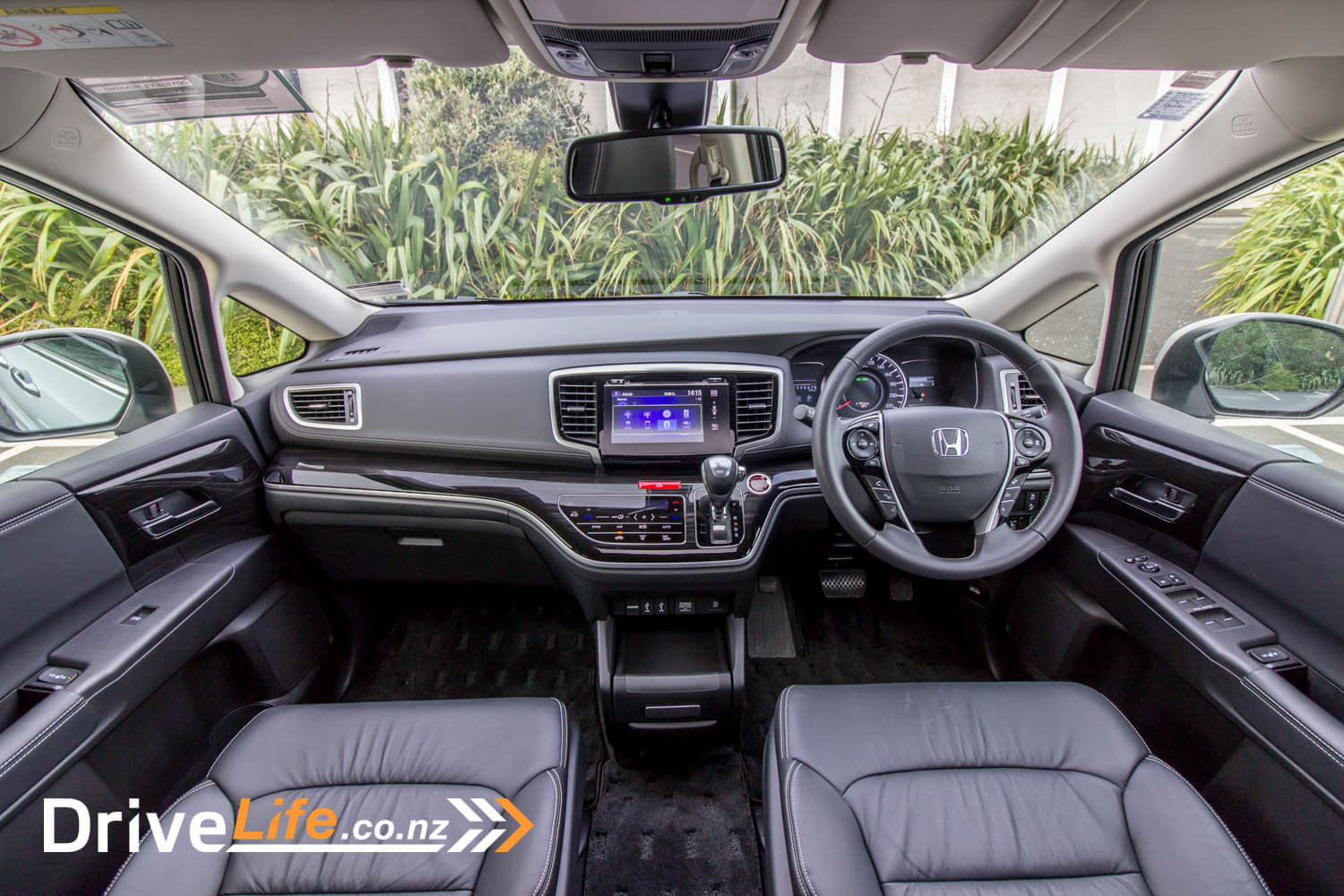
The LS ups the ante by adding automatic LED headlights, LED front fog lamps, active cornering lights, keyless entry and start, power and heated 8-way driver’s seat, power and heated 4-way passenger’s seat, an electric sunroof, privacy glass, rear blinds, tri-zone AC with roof and floor vents, built-in SatNav, ISOFIX mounts for the second row, automatic power folding mirrors, Honda’s Advanced Active Safety Suite – which includes Smart Parking Assist with 360-degree multi-view camera, blind spot monitoring, and rear cross traffic alert. There’s also the Sensing package which includes adaptive cruise control, lane keep assist, collision mitigation, forward collision warning, rear departure mitigation, and lane departure warning.
At $8,000 over the base model the LS certainly adds a lot more kit for your money, although seating capacity drops to seven.
Keen on a big colour selection? There’s a total of 5 colours to pick from; Platinum Metallic, Cobalt Blue, Carnelian Red Pearl, Crystal Black Pearl, and White Orchid Pearl, which our test car was finished in.
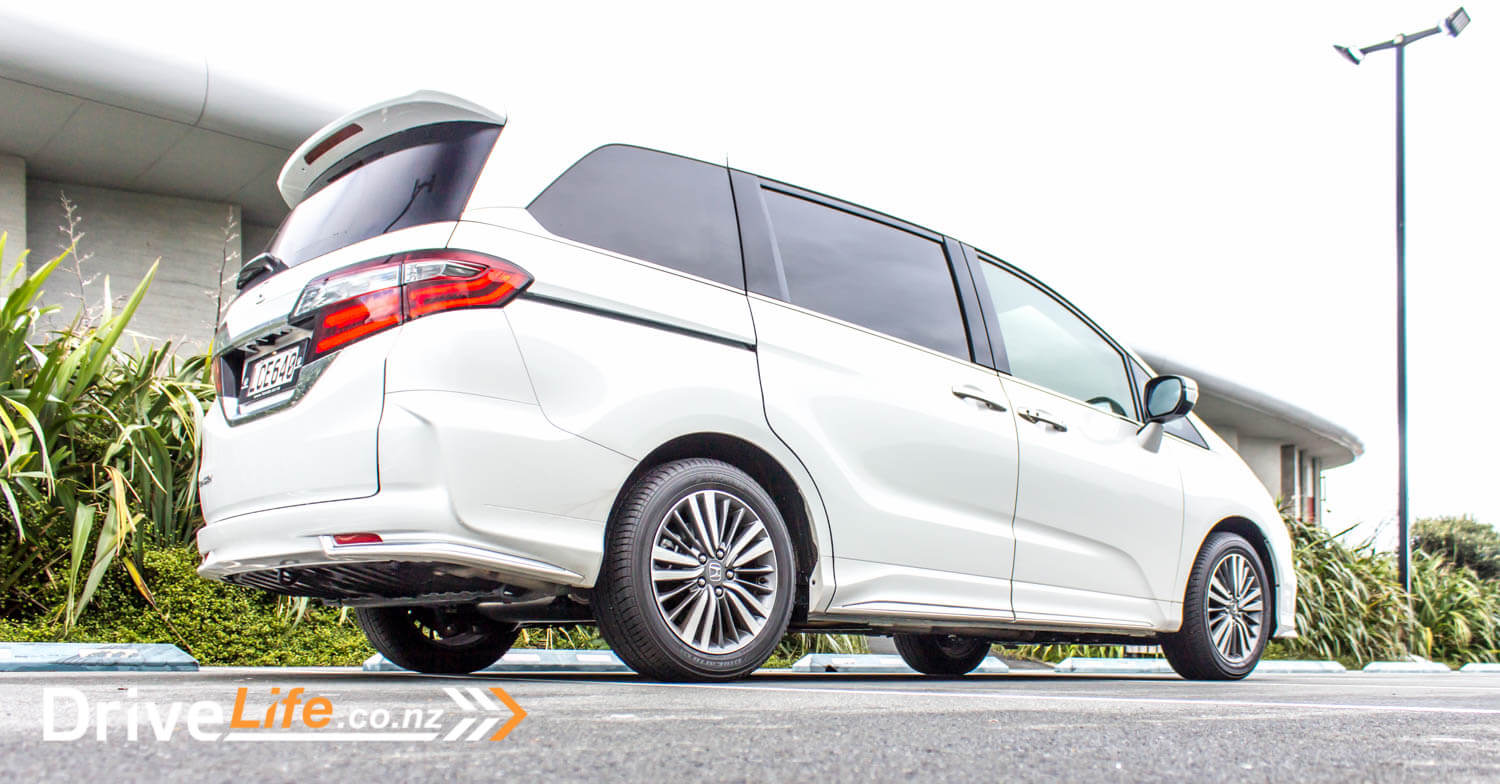
First Impressions
The Odyssey has gained more than a few belt sizes. It’s now a car that borders on enormous, and reminds me instantly of the Kai Carnival we tested back in 2016.
With good reason I guess, these are the two remaining true people movers on the market, without going to an SUV or a van like a Previa.
During my week with the Odyssey, every time I returned to it, I couldn’t get over the size of it. I sold a 2008 Odyssey recently, and that was sporty looking people mover – does anyone else remember when the 2003 RB1 model came out? It blew people’s minds with that design. How could a people mover look so good?
The 2018 model is more of the ‘big all over’ school of design.
Actually while most still consider the Previa a van, that’s what the Odyssey reminds me of the most. When I parked next to one, one day – so similar in size it wasn’t funny. The Odyssey is actually longer than a Previa.
And the looks? I think it’s best to say it’s a personal choice. The shape grew on me, but it’s very angular and sharp. Some people didn’t like it at all, but it does stand out. Honda says the 2018 Odyssey “showcases the latest evolution of Honda’s ‘solid wing face’ design.” I’m not really sure what that means.
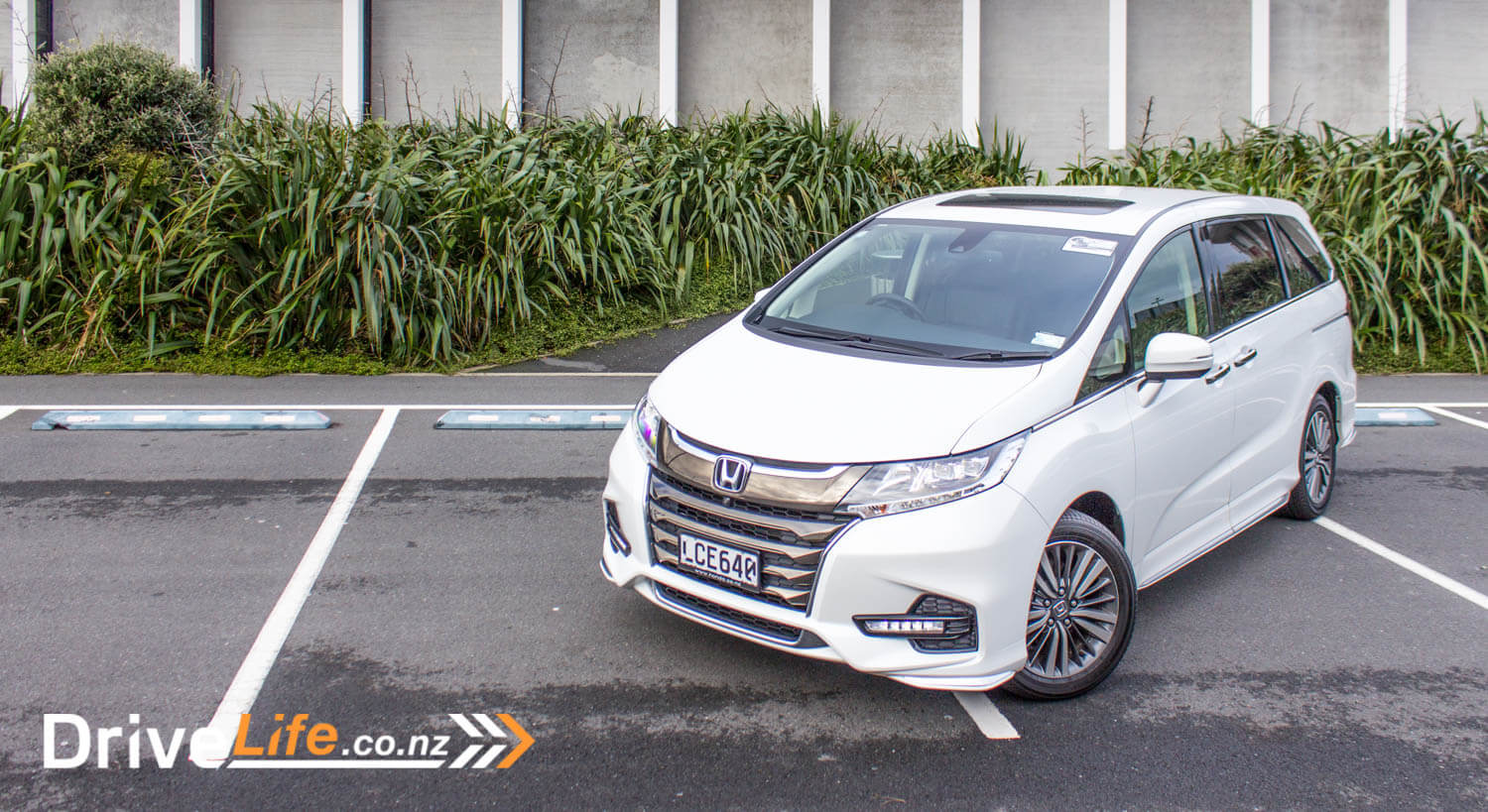
The Inside
This is where the Odyssey excels. Sure, the older models were small on the outside and Tardis on the inside, but the 2018 model also has heaps of space, and luxury.
Both of the front row seats have fold-down arms rests, with the second row seats having them on both sides of the seat. That’s appreciated on those long hauls to football games and the like.
Sitting in the driver’s seat, there’s small centre console on the floor which has a button that allows you to lift it up to a more usable height. It’s a nice party trick. There’s no actual space inside the console, there’s just a small tray on top. There are two cup holders in the lower part of the console.
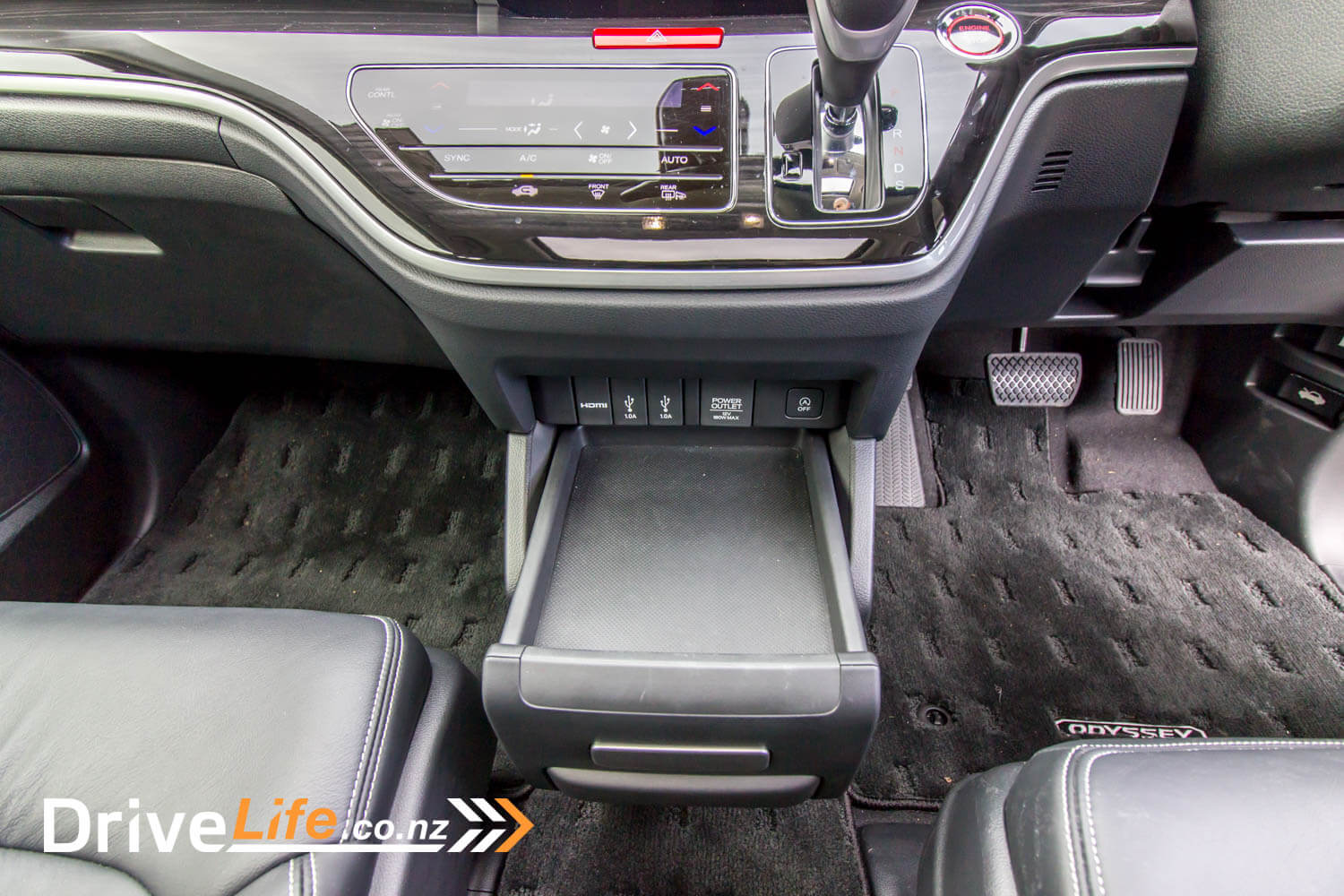
My first feeling when jumping in the driver’s seat is that the Odyssey is definitely a car you sit on, rather than in. I wouldn’t say it’s bus-like, but the size can feel intimidating to start with, and that feeling of being on top of it rather than part of it can feel overwhelming. But for me, after a day it felt completely normal, until I got into a hatchback and thought I was in a race car.
The leather steering wheel has a really nice feel to it, and although it has 19 buttons on it, they all work well and intuitively – no problems here.
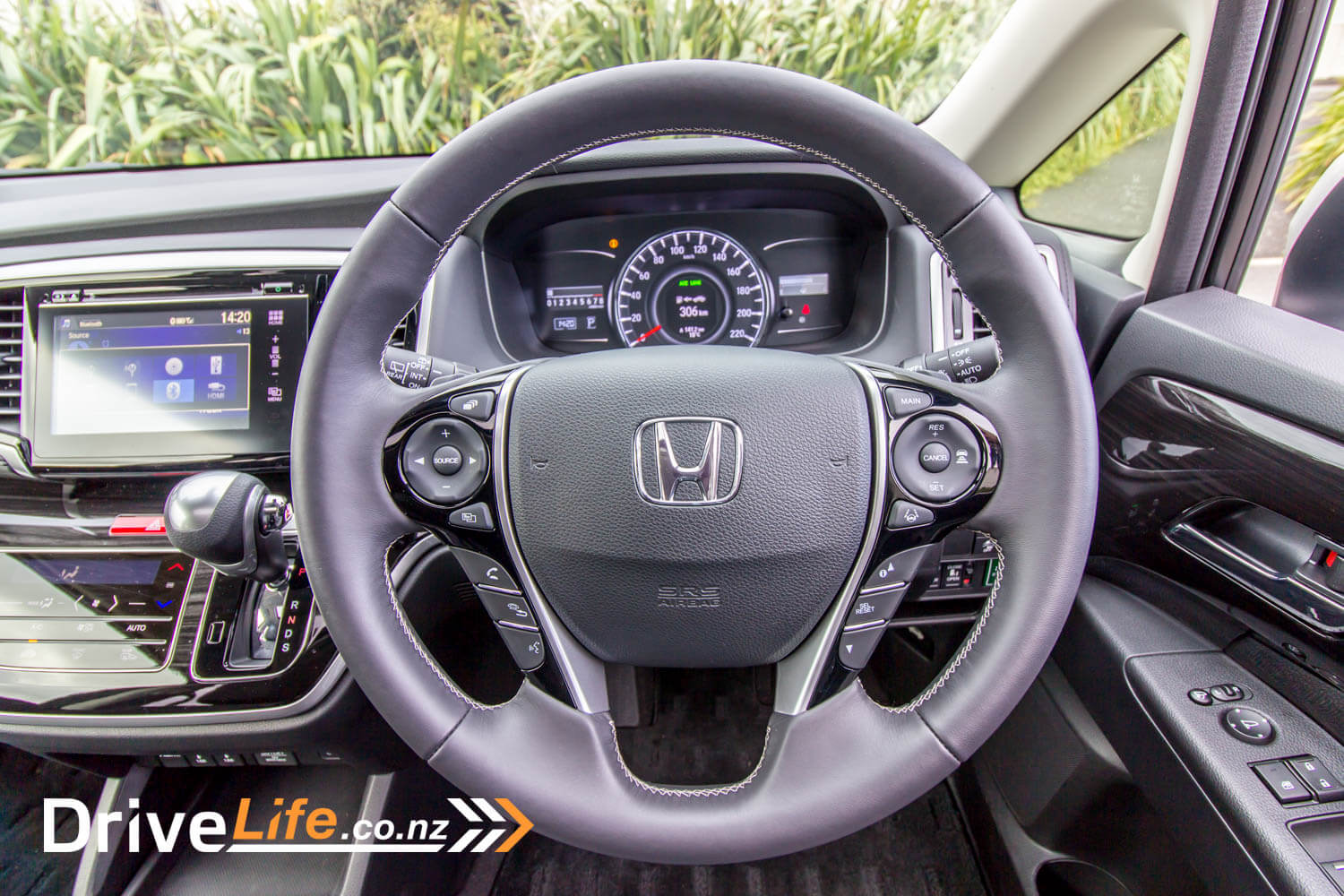
I’m not sold on the fake dark wood on the dash and doors – it’s so dark it’s really hard to tell it’s fake wood. Some people might prefer that. I’m a wood man, so if you’re gonna give me fake wood, I prefer it to actually look like wood.
There’s beige headlining on the pillars and roof in the Odyssey, and our test car had black leather. It all looked nice, and I must say with the fold-down arm rests in place, it looks quite luxurious as well. There’s an electric tilt/slide sunroof with a manual blind, and as always I left the blind open to get some light into the cabin. The cabin itself is pretty light inside anyway, and the visibility is a stand-out – it needs to be with the size of this car, and delivers.
The dash itself has almost no physical buttons – nearly everything is menu driven or has flush buttons, such as the AC system.
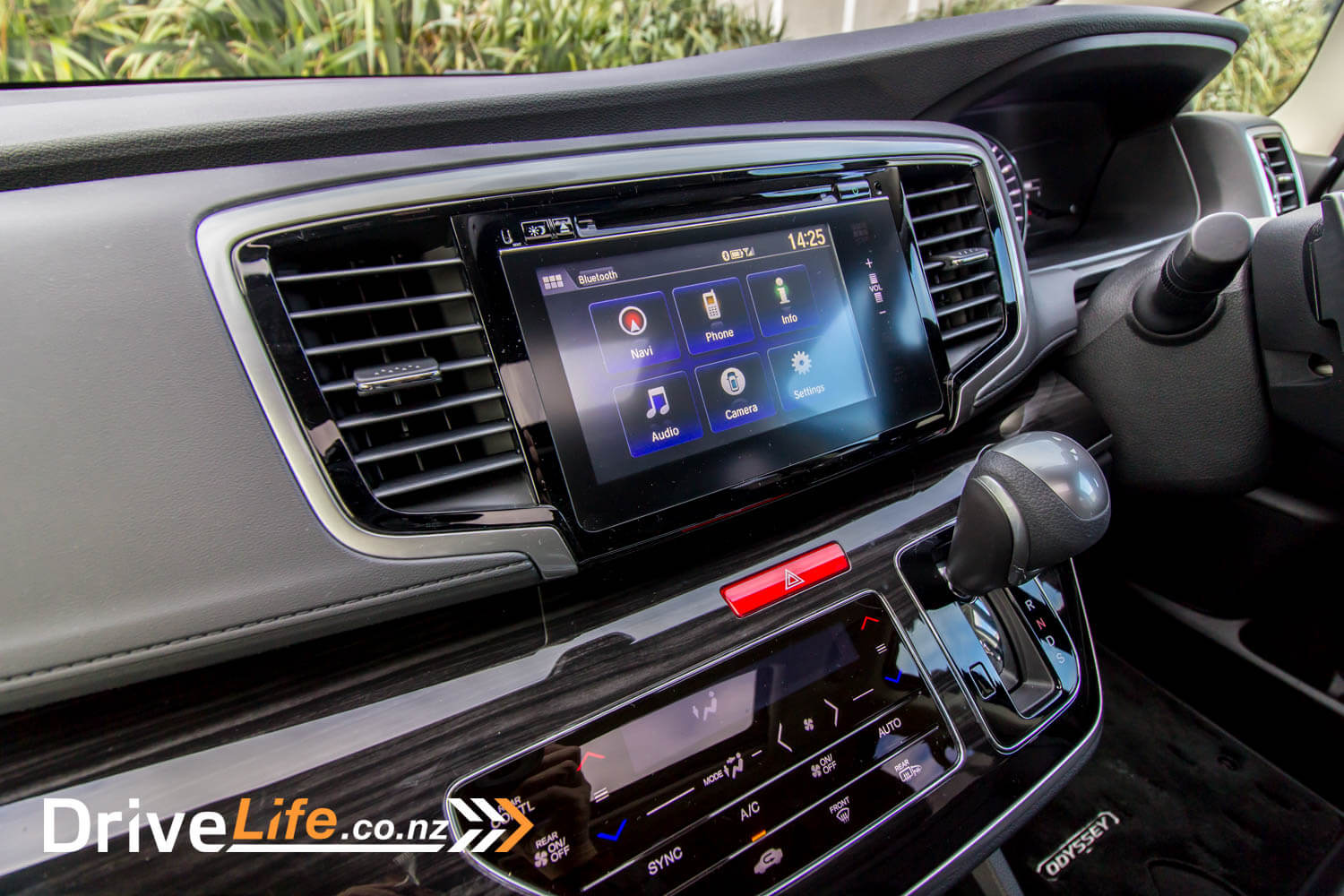
Flipping down the sunglasses holder on the roof gives you a conversation mirror if you stop it half-way, which is handy to tell what the kids are up to in the back. A shame we don’t get the rear camera that the US Odyssey gets, that would be even better. The US version also comes with a built-in vacuum cleaner, which would be better again.
Still, Odyssey owners here aren’t too hard done by, with full leather on the L Sensing model. Front seats are heated, and I think it’s the first time ever I’ve seen the seat-heater switches on the doors. Not the end of the world, just a bit different and it does mean the driver can’t switch off the passenger’s seat heater without stopping the car and reaching over to that door.
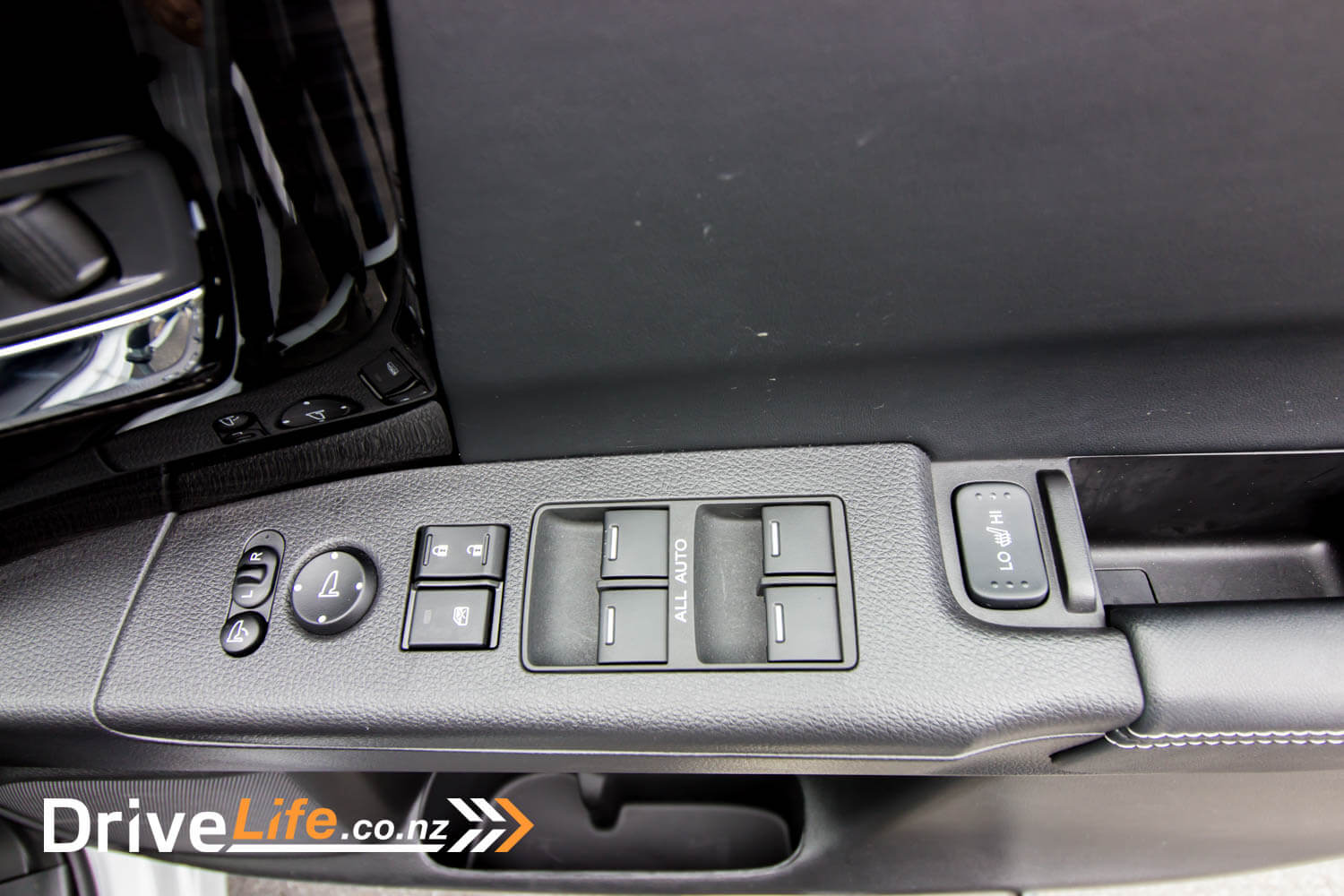
Second row passengers get really looked after – not only do they get flip-up foot rests, but pull-up window blinds as well.
In typical Odyssey fashion, you can walk through from the front seats to the second row, and since we’re testing the L Sensing model that’s a 7-seater, we can also walk through to the third row too.
The second row captain’s seats can also move sideways, although I’m not sure why. With them apart as far as possible, there’s a reasonable amount of space to walk through to the third row.
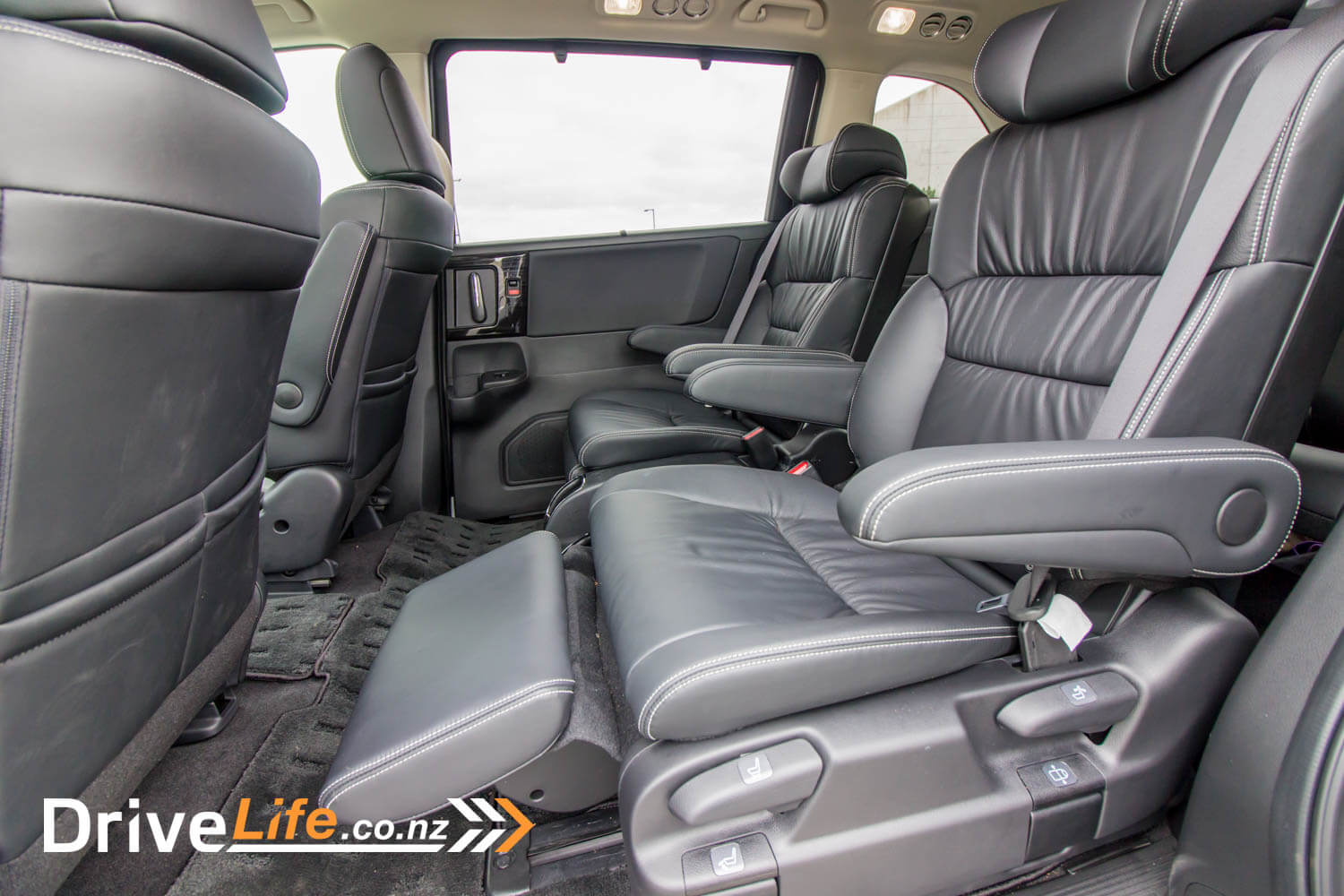
Still on the second row, those passengers get cellphone holders on the front of the seats, nearest the centre of the car. Interestingly – and I have no idea why – Honda have put some signs above these cellphone holders that show a cup with an ‘X’ through it – so don’t put your drinks in here please. Cellphones only here, people.
There are drink holders in the sliding doors anyway, but I’m not sure why passengers are banned from putting drinks in the cellphone holders.
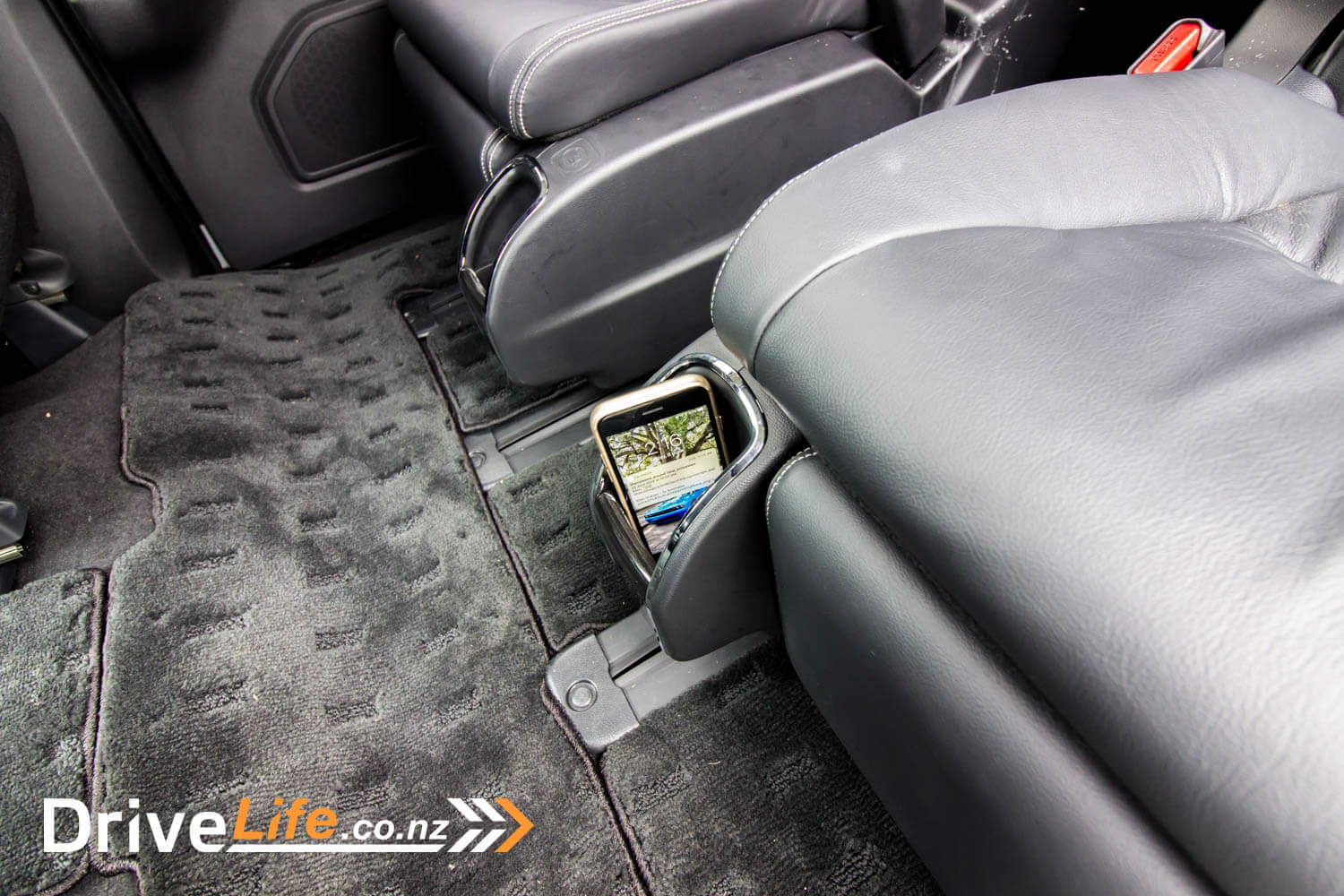
It’s also a bit strange that Honda have chosen not to give the second or third row passengers even a single USB port for charging phones – I really thought there’d be one for every seat. A weird omission, when you think of how this car will be used. The third row gets a single 12-volt socket on one side, and that’s it.
Up front at least there are two USB ports, also an HDMI port and another 12-volt socket.
Legroom for all passengers is just fine – third row is acceptable, while the front and second rows are excellent. You can always shift the second row forward to give the third row more room, anyway.
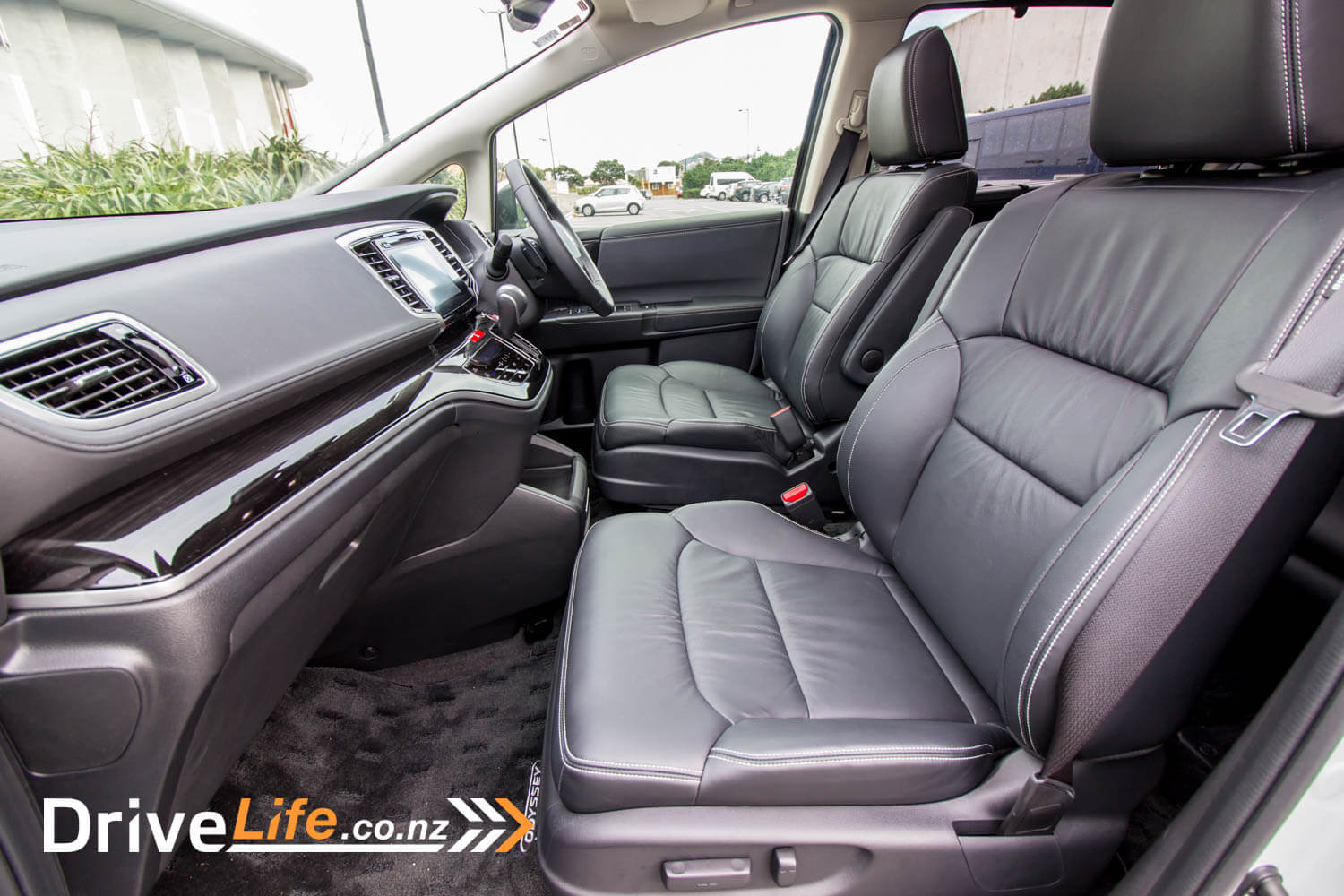
One of the Odyssey’s claims to fame has always been the ease of putting the third row of seats away, and the amount of space there is both with the third row up, and down. Don’t panic, it’s status quo in this department on the 2018 model. With the third row up, there’s a large space behind and below the seat, and putting the seat away is almost a one-handed process. Lift a handle and pull, the seat pops down. A kid could do it.
With that third row stowed away, you have a completely flat floor and a large amount of room for your stuff.
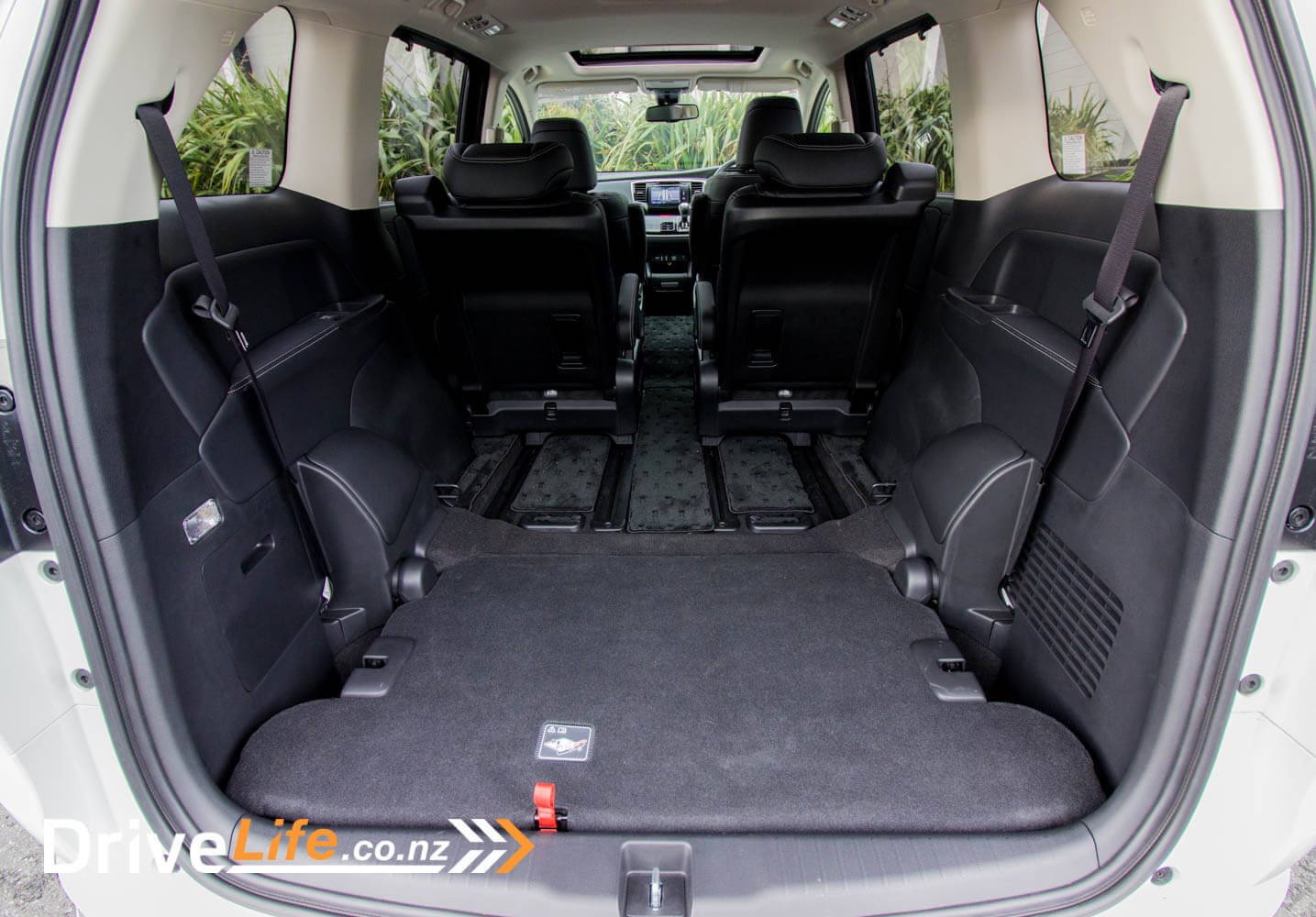
For second and third row passengers, there are two vents for every person, and there’s a tri-zone AC system in place, so no complaints about the temperature (hopefully).
I’m going to slip a ‘but’ in here – yes, it’s simple to put that row away when the tailgate is open. But…the tailgate isn’t electric. For a top-model – especially a Honda – I was pretty shocked the tailgate is old-school manual. It’s not heavy, I’ll give Honda that, but at $60K I was expecting this.
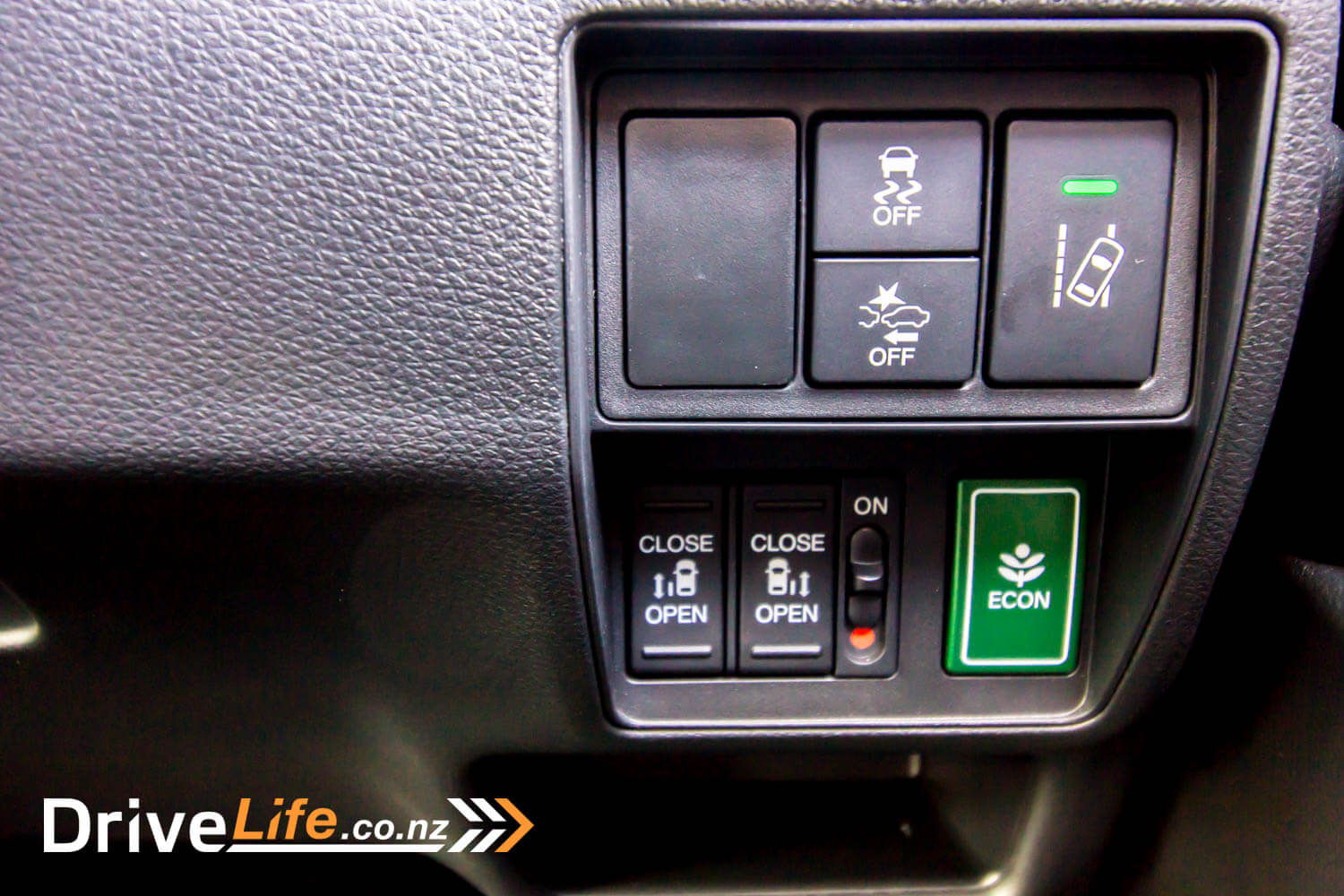
The Drive
I’ve already mentioned how big this car is, and how it feels big to start with. I’m going to mention visibility again, ‘cause it’s so good. A head-check while changing lanes is so easy – you can see everything around you. Sure, there’s blind-spot monitoring, but visibility is first class anyway.
The sliding doors are enormous, and when you look through them to check blind spots while driving, there are no pillars – the windows in those doors are freaking huge.
This also means that passengers in the second row get a great view out of the car, and the captain’s seats are quite high, so there should be no children with any car sickness back there.
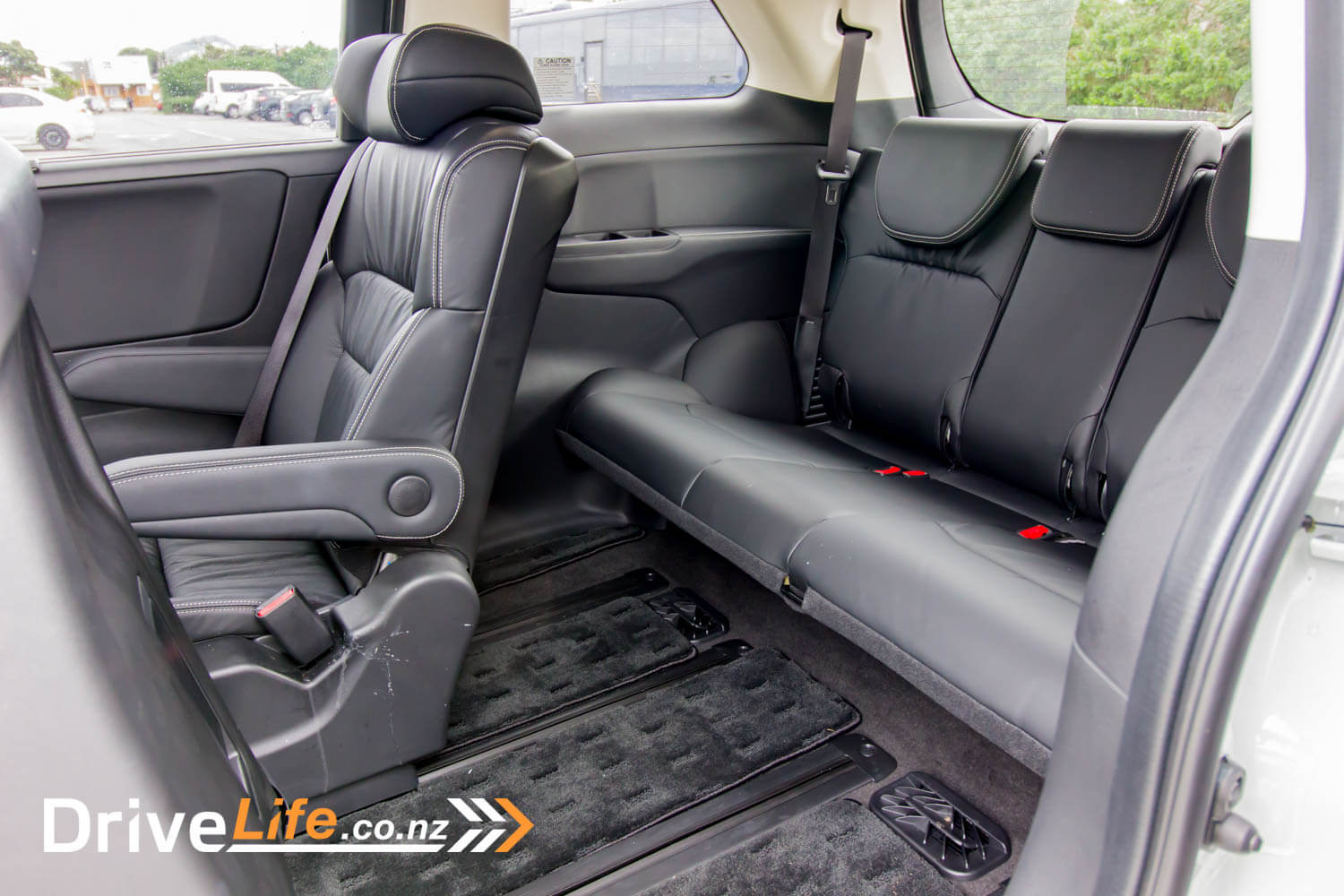
Getting in through those sliding doors is a matter of using the handles, the switches by the driver or using the buttons on the key fob.
Another surprise find was the Odyssey’s park brake – still a pedal. I know they’ve been like this for a long time, but come on Honda, surely it’s time to move on to an electric park brake.
In the driver’s seat, the dashboard is pretty simple. There’s a huge (HUGE!) speedo, which dominates the dashboard. To the left and right of it are bar-type gauges for the rev counter and fuel, and that’s pretty much it. It’s all fairly basic and simple, which some people will appreciate.
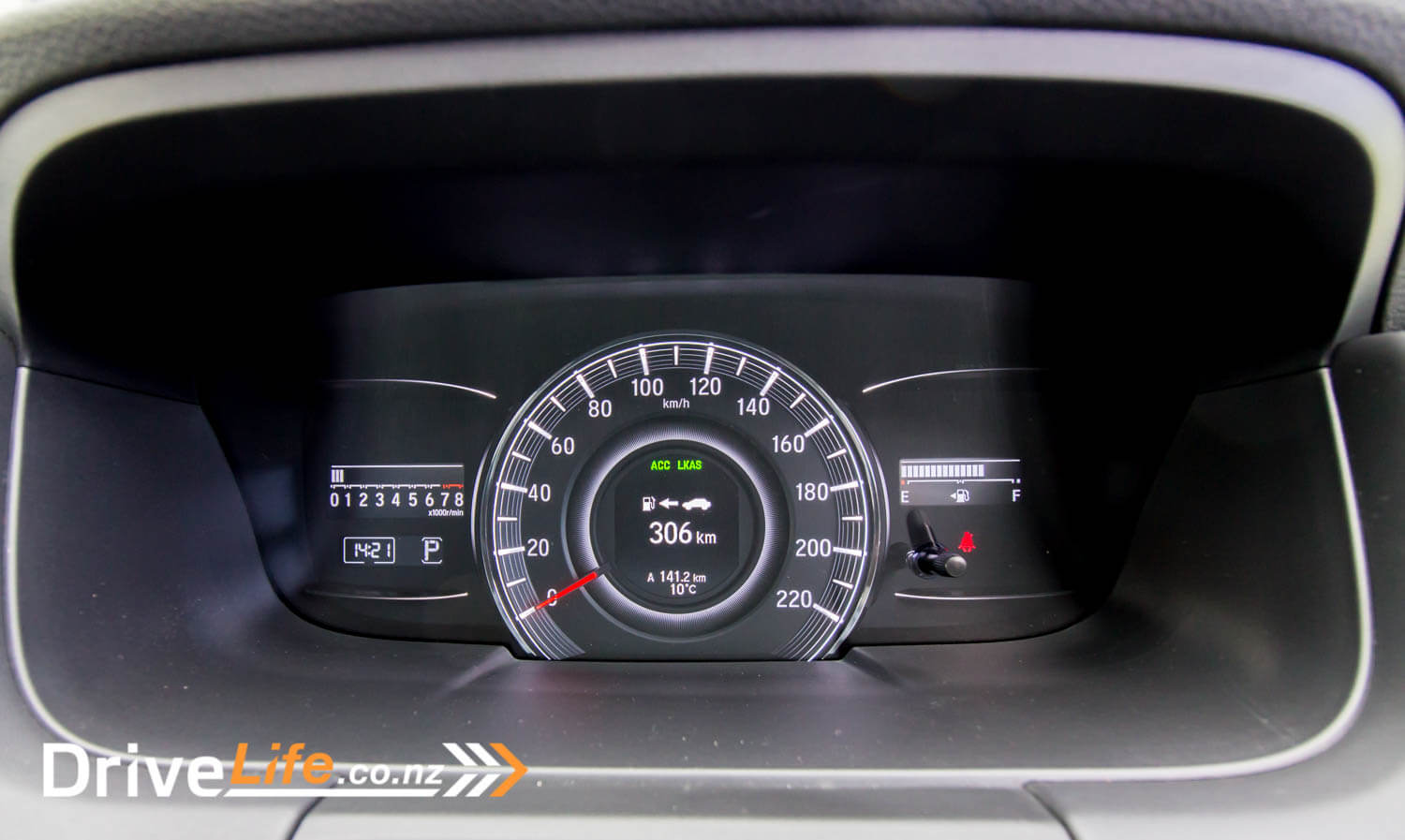
In the centre of the speedo there is a small driver’s information display for fuel economy, etc. I was really surprised that even though there’s built-in SatNav, you don’t get any turn-by-turn directions in this display. I was hopeful of a heads-up display, but that tech hasn’t made it to the Odyssey yet.
Also missing is a digital speedo – almost a must these days. While we’re discussing missing items, there’s also no auto wipers – just auto headlights. Weirdly, this is the same as I remember for the Kia Carnival. At this price point, I’d expect something as simple as auto wipers to be standard.
There is however adaptive cruise control, and it mostly works a treat. All operated from the steering wheel, and simple to use. The only catch here is that it won’t bring the car to a full stop – at about 20km/h, there’s a beep and then the system turns itself off. Be prepared for this or it may catch you out.
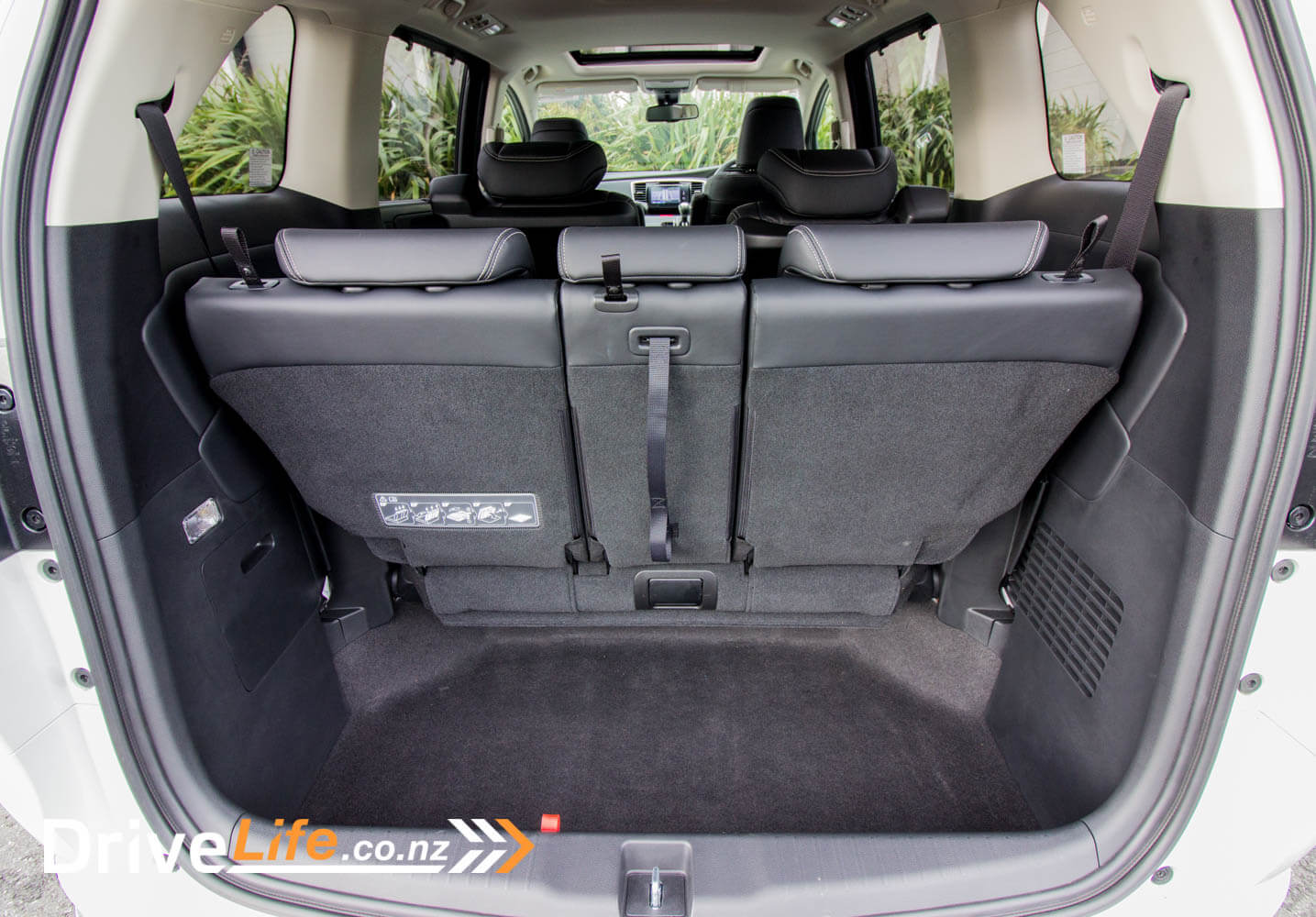
On the road ride quality is another stand-out – it’s excellent. You’d expect it to be with a 2900mm wheelbase and all that 1,861kg of weight, and I’m sure the smallish 17-inch wheels help here too. It’s nicely compliant, without being too wallowy in the bends. That’s not to say you should give it the beans on a windy road – the Odyssey is all about smooth progress, and if you drive it like that, it will reward you. Drive it like a sports car, and well…just don’t. That’s not what the Odyssey is about.
Opening any door any night, there’s a nice simple white light under the centre of each side of the car, lighting your way. It’s not gimmicky with a logo or anything, but it does look classy.
Driving at night sees the cornering lights come on when turning, and they are decently bright. There’s no intelligent or even auto high-beams on the Odyssey, but the lights themselves are just fine.
Audio quality is good, and returning to the car means that it returns to Bluetooth – great – but sometimes forgets the track it’s on, or says playing but no track is displayed and no sound comes out. This may have just have been a glitch in our test car, or even my phone.
The menu system a bit slow to respond when using the touchscreen, although the menu system itself is thankfully simple to use.
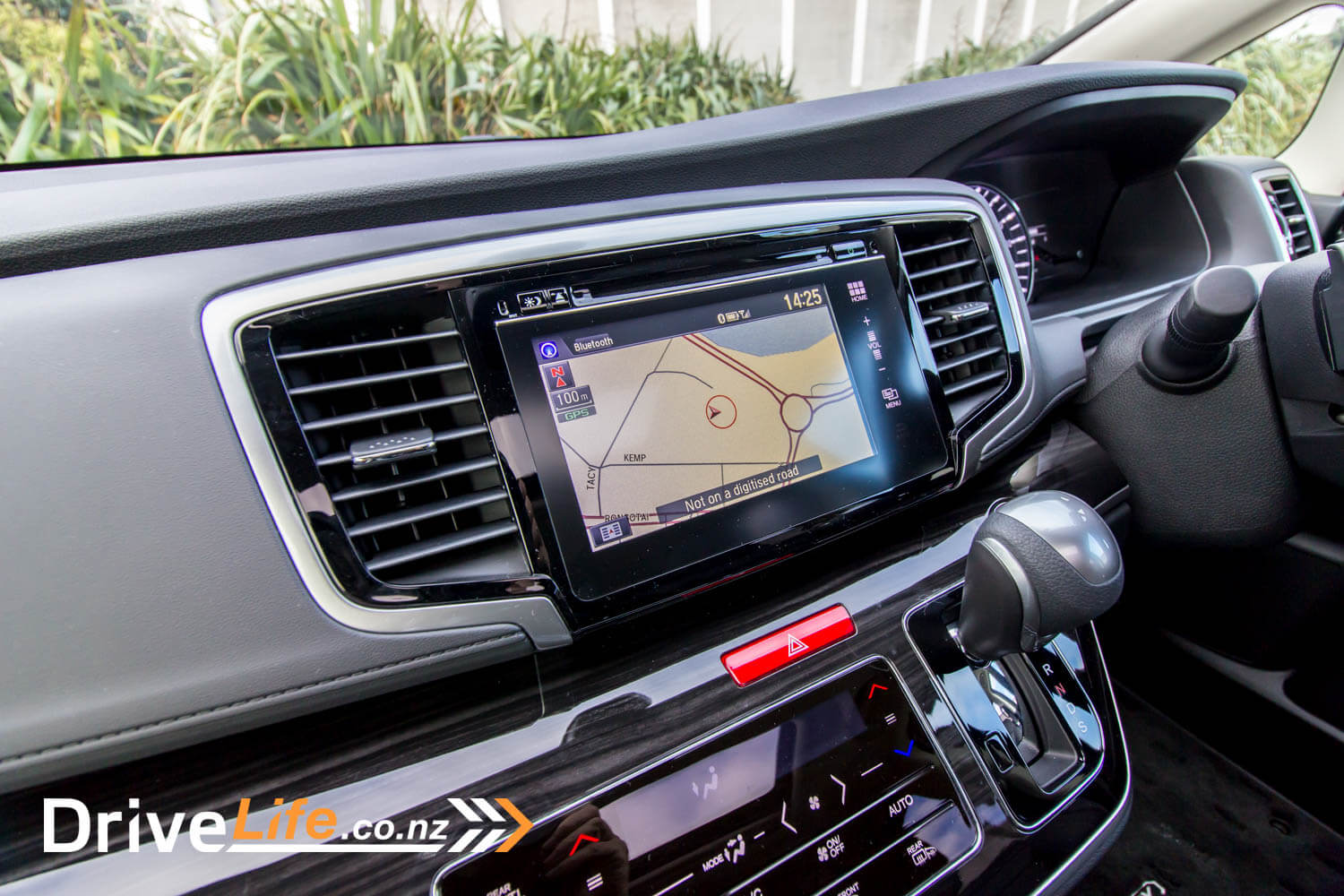
When selecting reverse, the display defaults to the 360-degree view which is excellent. Nicely crisp with usable guidelines. You can also switch it a wheels-only view, so you can see how close either front wheel is to the kerb.
With the 360-degree camera system in place, you lose front and/or rear parking sensors, which is a shame. It’s so great to have both systems, especially when the rear camera is wet from the rain and the image is a little blurry.
There’s auto parking too, but to activate it you need to either hit button at the end of the indicator stalk, or go through menus by hitting the Home button, then Camera, then the auto park button. It’s bit painful if you are in a rush, but the system itself worked just fine.
Interesting the that Odyssey has tech like 360-degree view system and auto parking, but has other non-tech stuff like the very basic, non-customisable instruments and pedal park brake.
There’s a pretty decent turning circle, and the Yokohama tyres are nice – not much noise, and the grip is reasonable, even with the week of heavy rain that came while I was testing the car.
Wind noise too is quite low, and I could see this being a comfortable car for an Auckland-Wellington road trip.
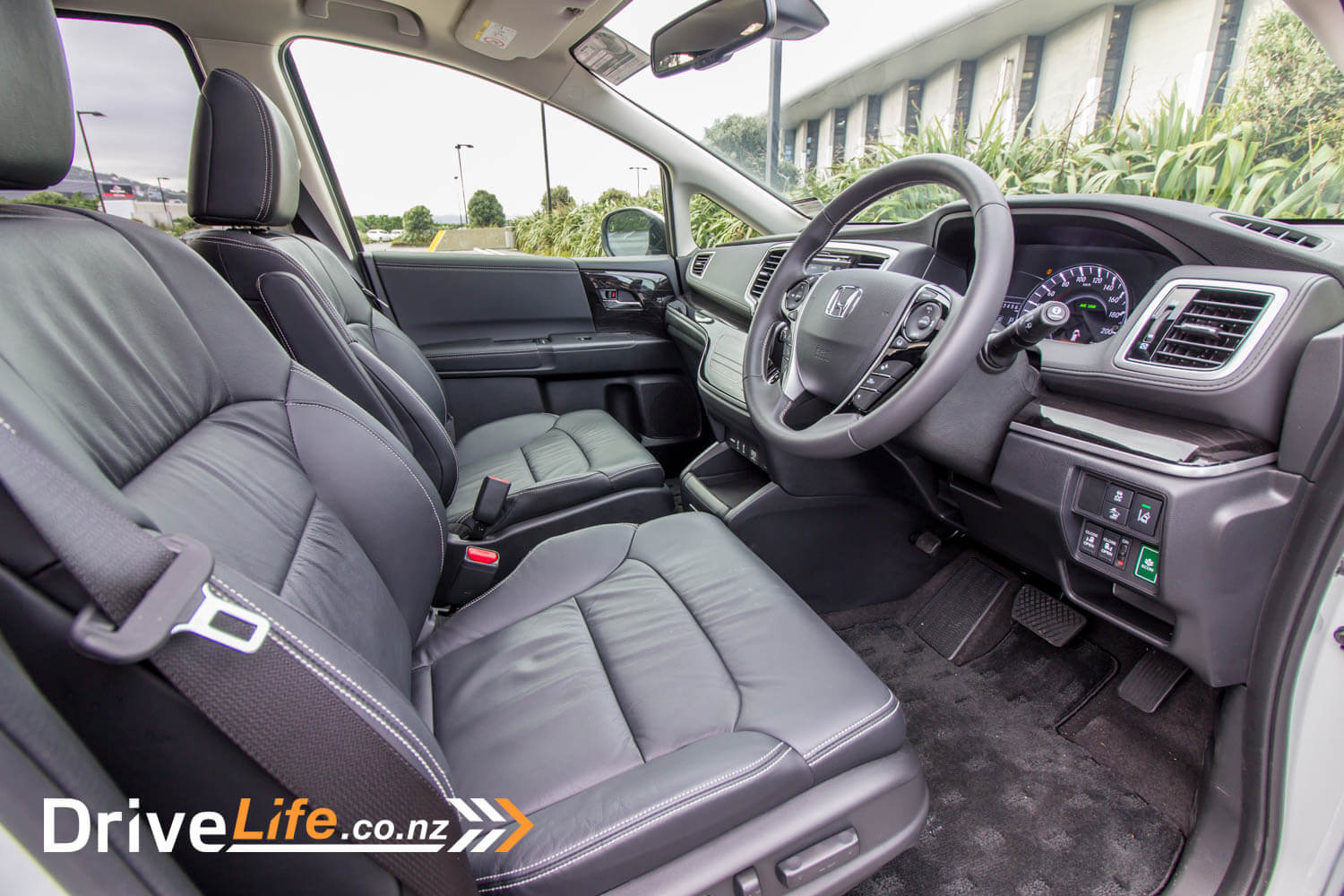
The driver also gets paddle shifters, and these are great for getting a bit of engine braking going instead of using the brakes.
Of course, the Odyssey does have a CVT gearbox. It’s a ‘7-speed CVT’, so it does try to be a sporty little normal auto gearbox sometimes. Do you still get CVT flaring? Yes. It is bad? I’d say average. Going up a steep hill, I was hoping for less flaring and more normal-feeling gear changes, but I got lots of whirring instead. This does bring out a reasonable amount of engine noise.
On the whole the engine is smooth and quiet, but give it a push along and once that CVT starts allowing the engine to rev out, there is some noise to be had with it.
On the plus side of things, Eco mode is very usable. I spent a few days driving only in Eco mode, and actually, I had forgotten I’d turned it on. Then when I turned it off, the Odyssey felt like a bit of a race car. It’s not that often a car is easily driveable in Eco mode, but the Odyssey is one of them.
Honda reckons the Odyssey should give around 7.8L/100km in fuel economy. Admittedly more of my driving for the week was around town, so I averaged 11.5l/100km. That’s pretty high for a 2.4-litre, four-cylinder car, but remember this thing weighs a fair amount. With more open road running I am sure I’d get much closer to Honda’s claim.
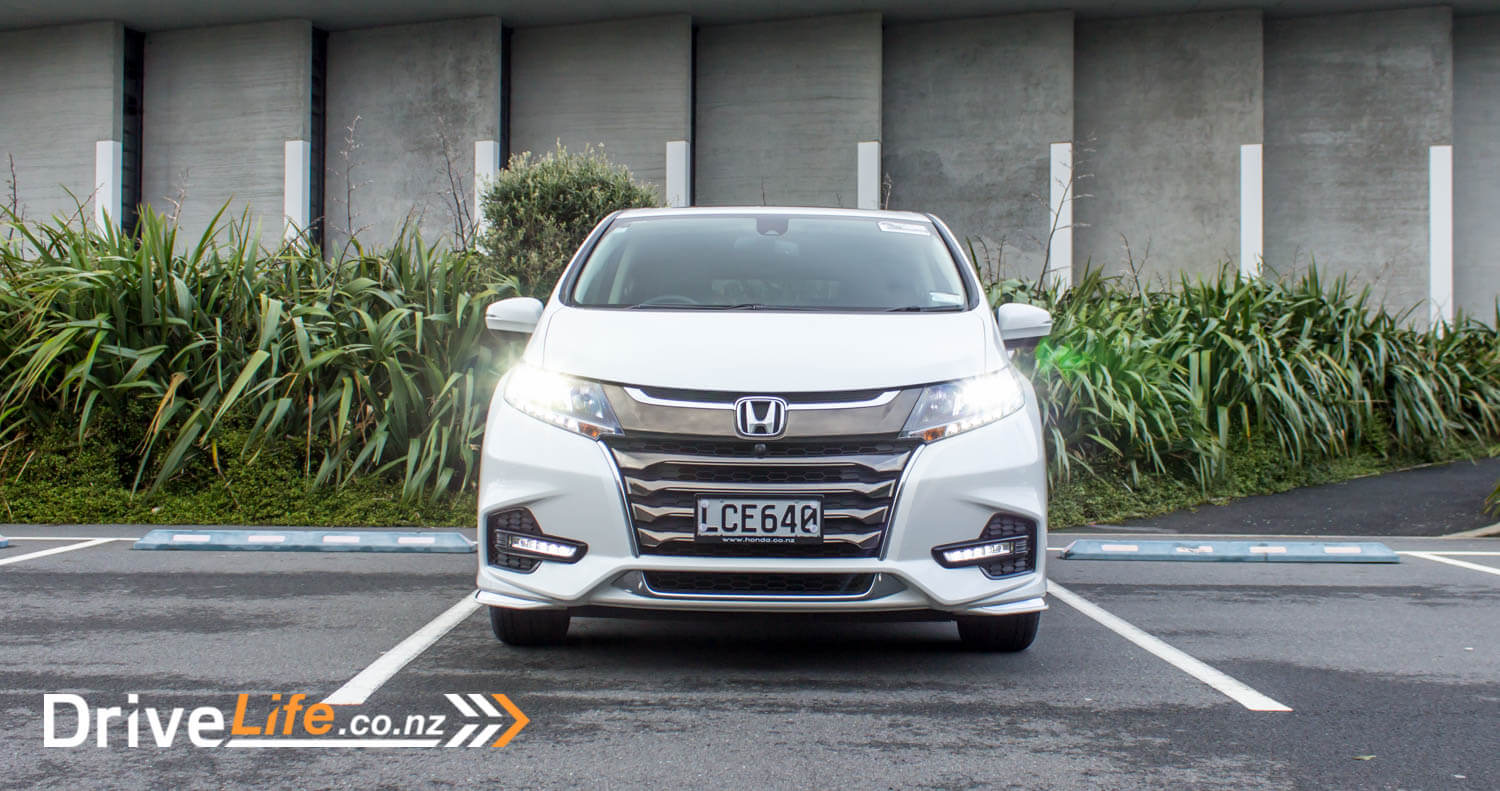
The Competition
| Brand/Model | Engine | Power/Torque | Fuel, L/100km | Seats | Boot space, litres (3rd row down where fitted) | Towing capacity, Kg (unbraked/braked) | Price – High to Low |
| Kia Carnival Premium (FWD) | 3.3-litre, V6 petrol | 206kW/336Nm | 11.6 | 8 | 2220 | 750/2000 | $63,990 |
| Honda Odyssey L Sensing (FWD) | 2.4-litre, 4-cylinder i-VTEC | 129kW/225Nm | 7.8 | 7 | 1332 | NA/1000 | $53,990 |
| Toyota Previa (FWD) | 2.4-litre, 4-cylinder | 125kW/224Nm | 8.9 | 8 | 1100 | 600/1600 | $49,990 |
The Pros and Cons
| Pros | Cons |
|
|
What do we think of it?
I’ve said this before about the 2018 CRV – a car that used to be ground-breaking in its functionality, bit now is just a good SUV.
It felt the same for me for the Odyssey – for years, Honda blew away the Odyssey competition with its form and function. It was streets ahead of any other people mover.
The 2018 Odyssey isn’t bad at all – it does what it was designed to do very well on the whole. But it’s not got that…thing, that the Odyssey had. It doesn’t wow me with Tardis-like space utilisation, or its design.
It’s a good car and for anyone wanting a people mover, they should be happy. But I wish the Honda engineers would take a look at what made the first and third generation Odyssey so special, and bring that thing back. Honda has that potential, and the Odyssey needs it.
So to answer the question: SUV or people mover? For me, there’s no doubt people movers are sometimes a better choice than an SUV. You get something that’s designed to move people, instead of something that’s had some extra seats thrown in that are designed for occasional use.
Let’s face it, most 7-seat SUVs are pretty tight in that third row. People movers rule here, especially when you are transporting teenagers who need that extra leg space.

2018 Honda Odyssey L Sensing
Chevrons 3.5
| Vehicle Type | 7-seat, 5-door, front-wheel drive, people mover |
| Starting Price | $45,990 |
| Price as Tested | $53,990 |
| Engine | 2.4-litre, 4-cylinder i-VTEC petrol |
| Power, Torque | 129kW/225Nm |
| Transmission | CVT with 7-speed mode |
| 0-100km/h, seconds | N/A |
| Spare Wheel | Compact spare wheel |
| Kerb Weight, Kg | 1,861 |
| Length x Width x Height, mm | 4845x1695x1820 |
| Cargo Capacity, litres | 1332 (3rd row folded down) |
| Fuel capacity, litres | 55 |
| Fuel Efficiency | Advertised Spec – combined – 7.8L/100km
Real World Test – combined – 11.5L/100km Low Usage: 0-6 / Medium Usage 6-12 / High Usage 12+ |
| Towing Capacity
Kg, unbraked/braked |
NA/1000 |
| Turning circle, metres | N/A
Small: 6-10m / Medium 10-12m / Large 12m+ |
| Warranty | 5 years unlimited kilometres with Roadside Assistance |
| ANCAP Safety Ratings | 5 Star |
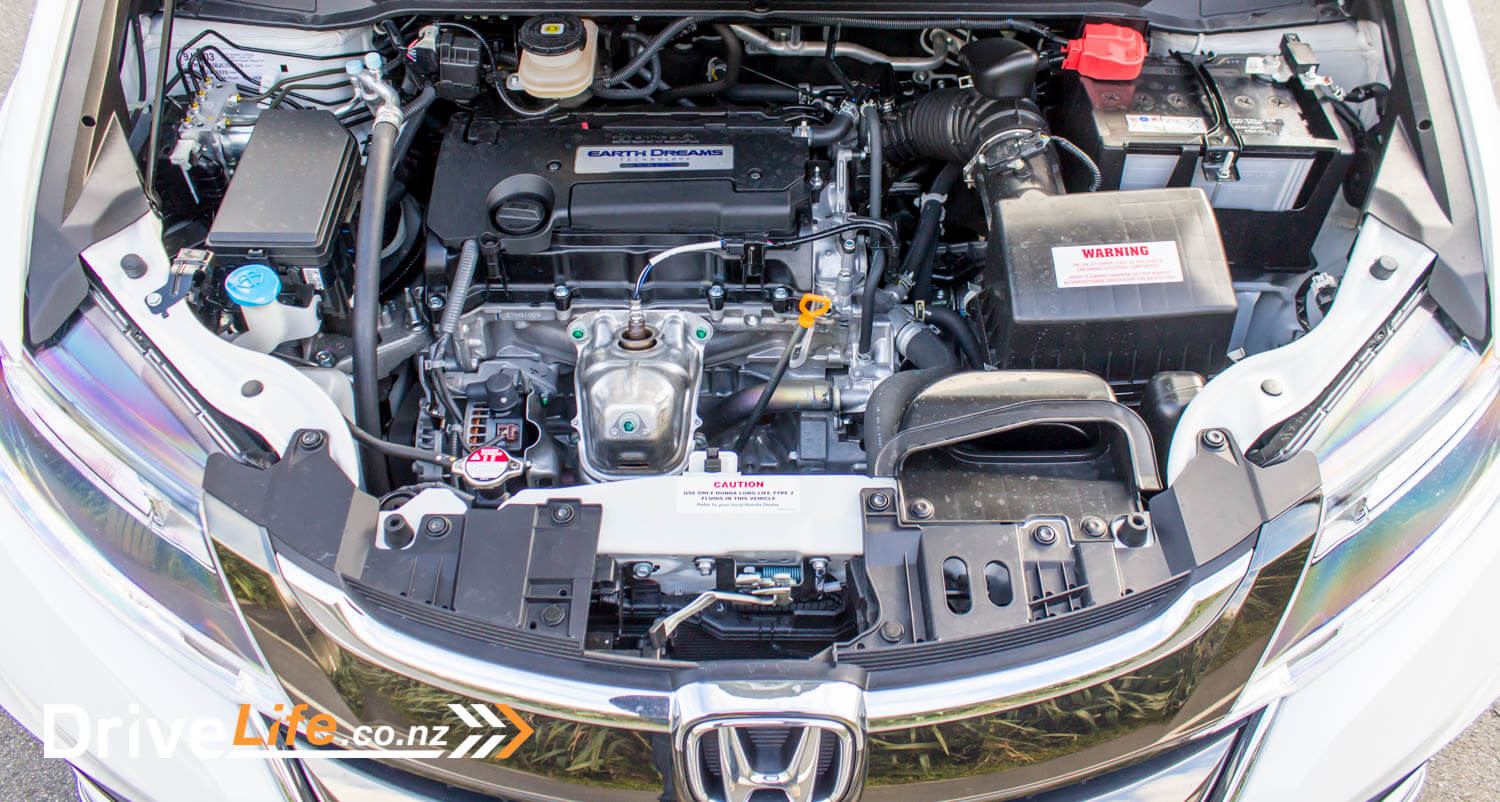
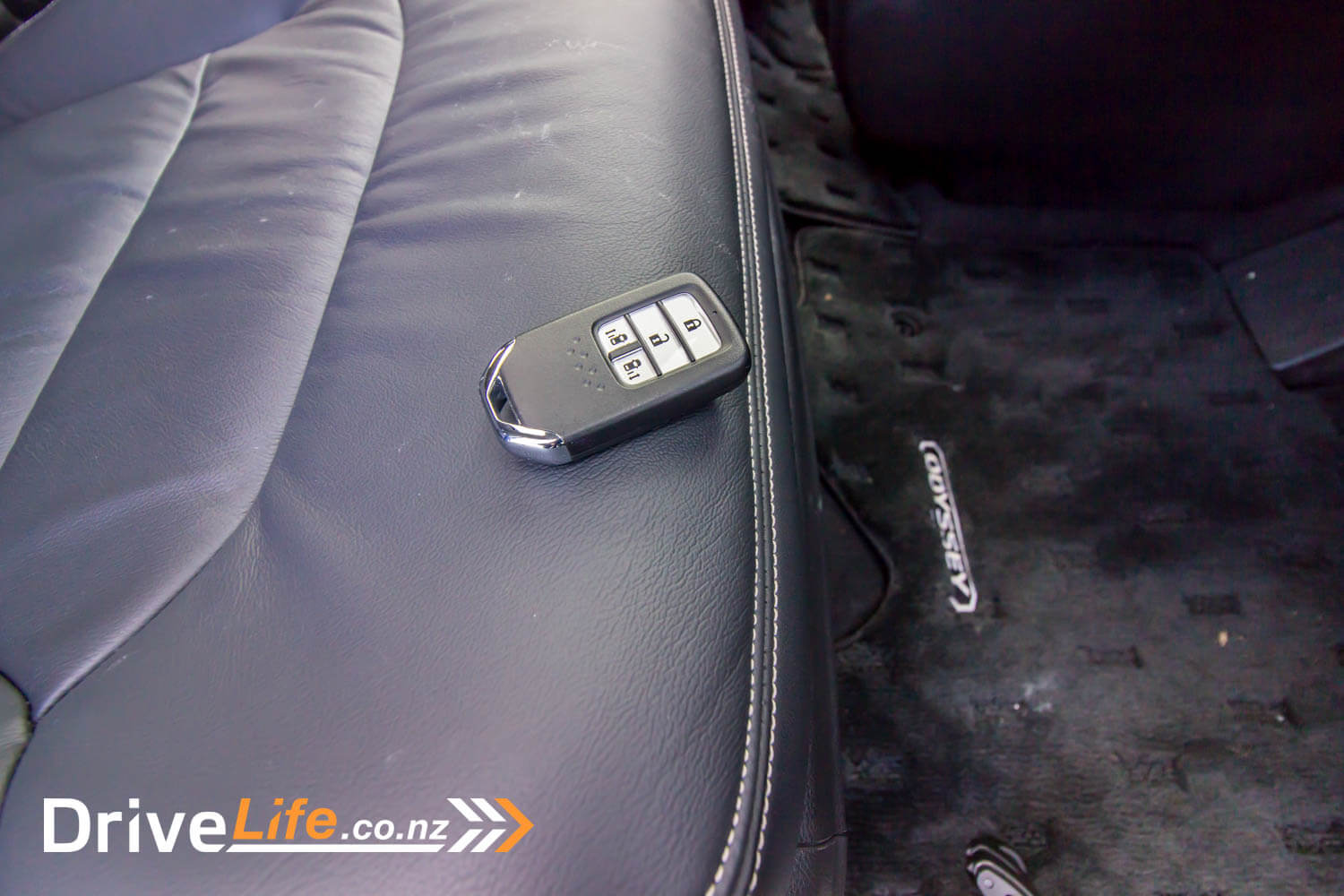
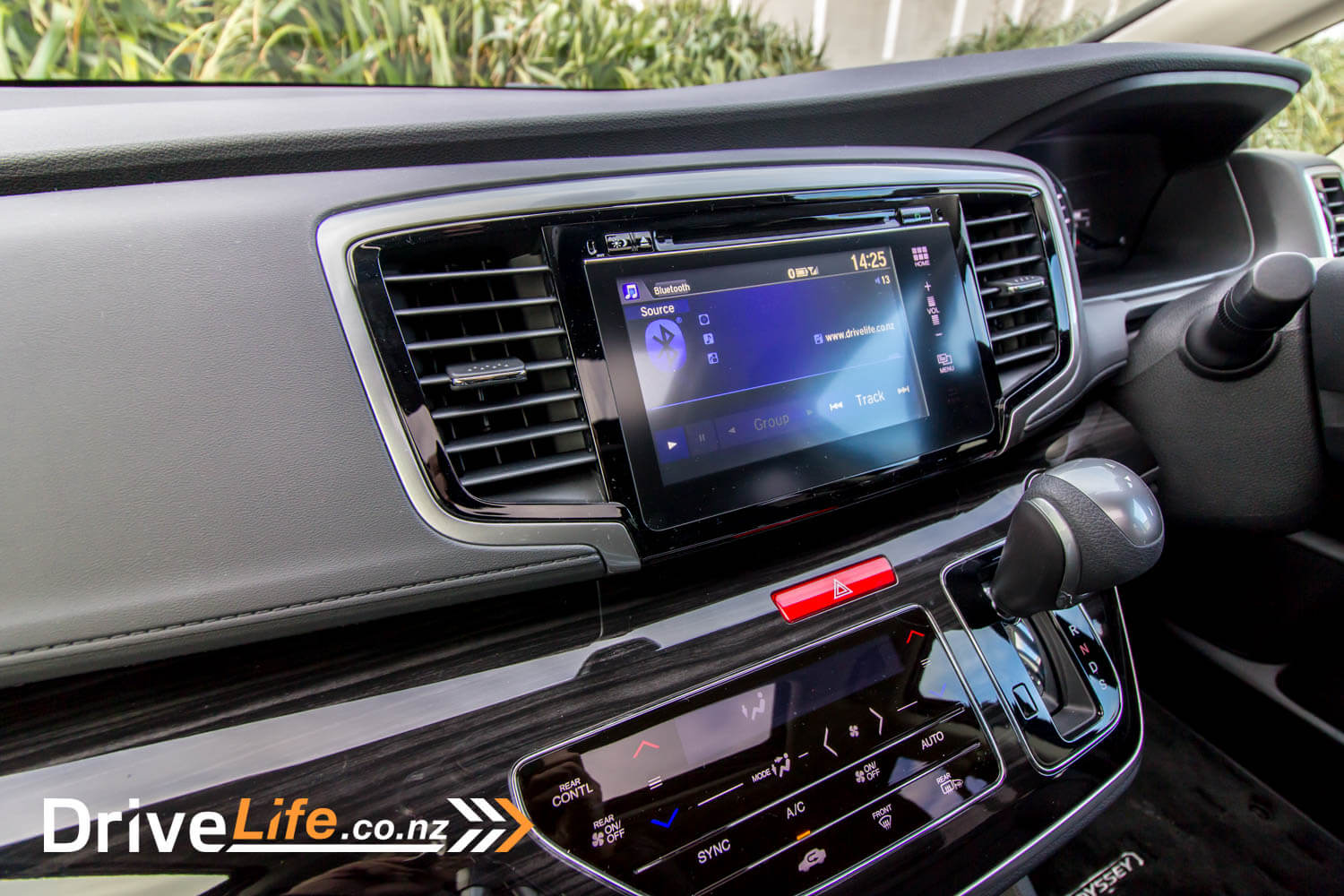

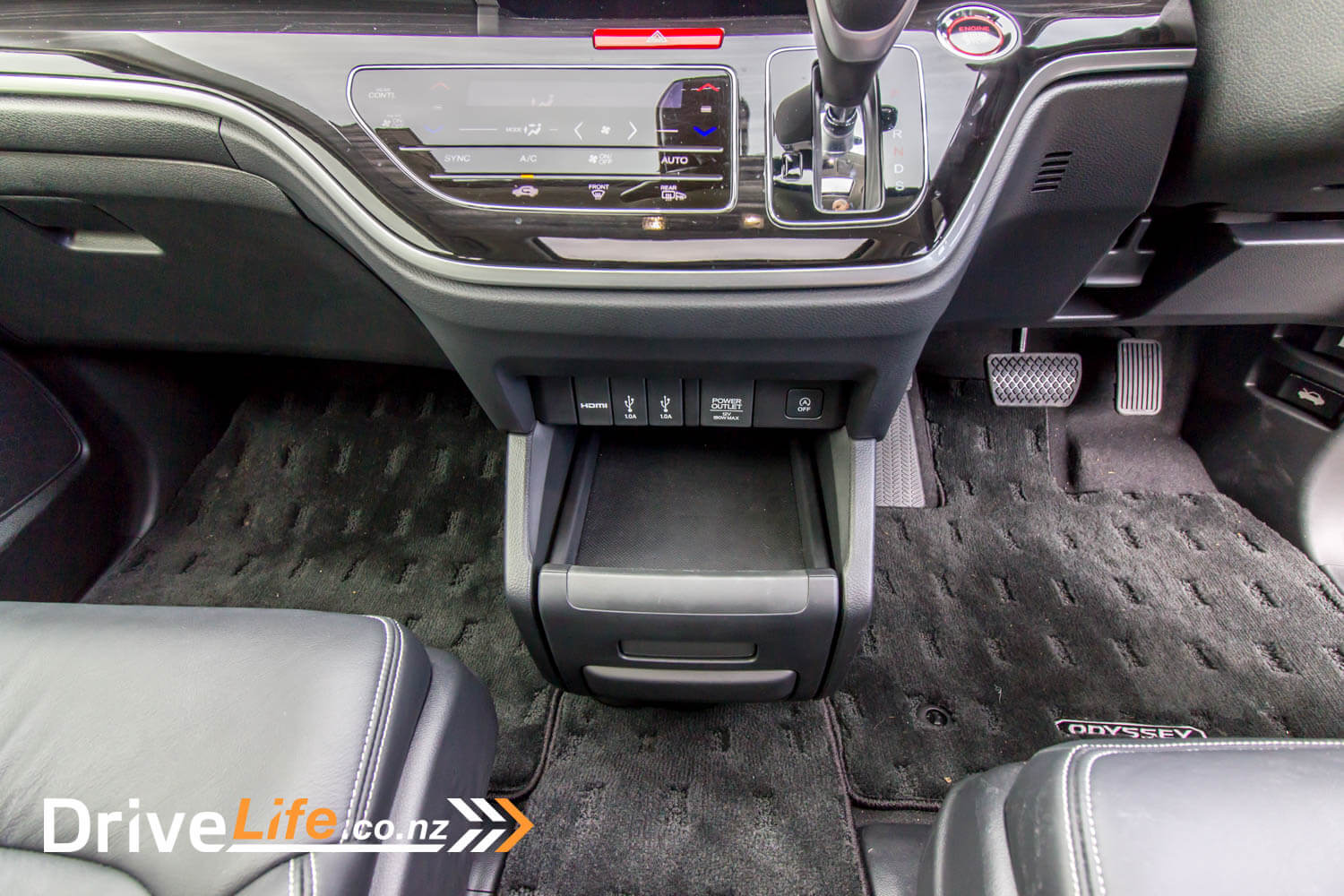

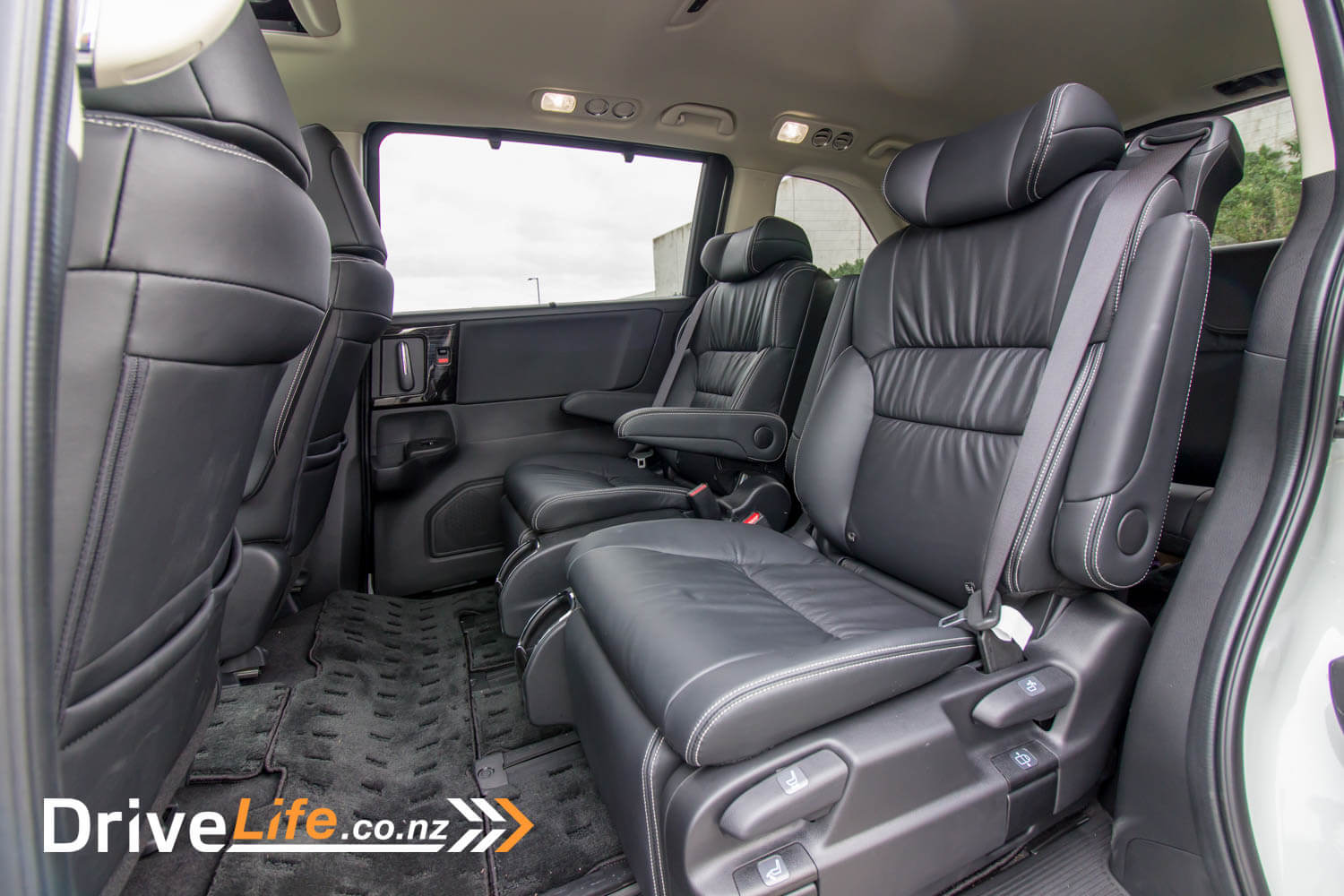

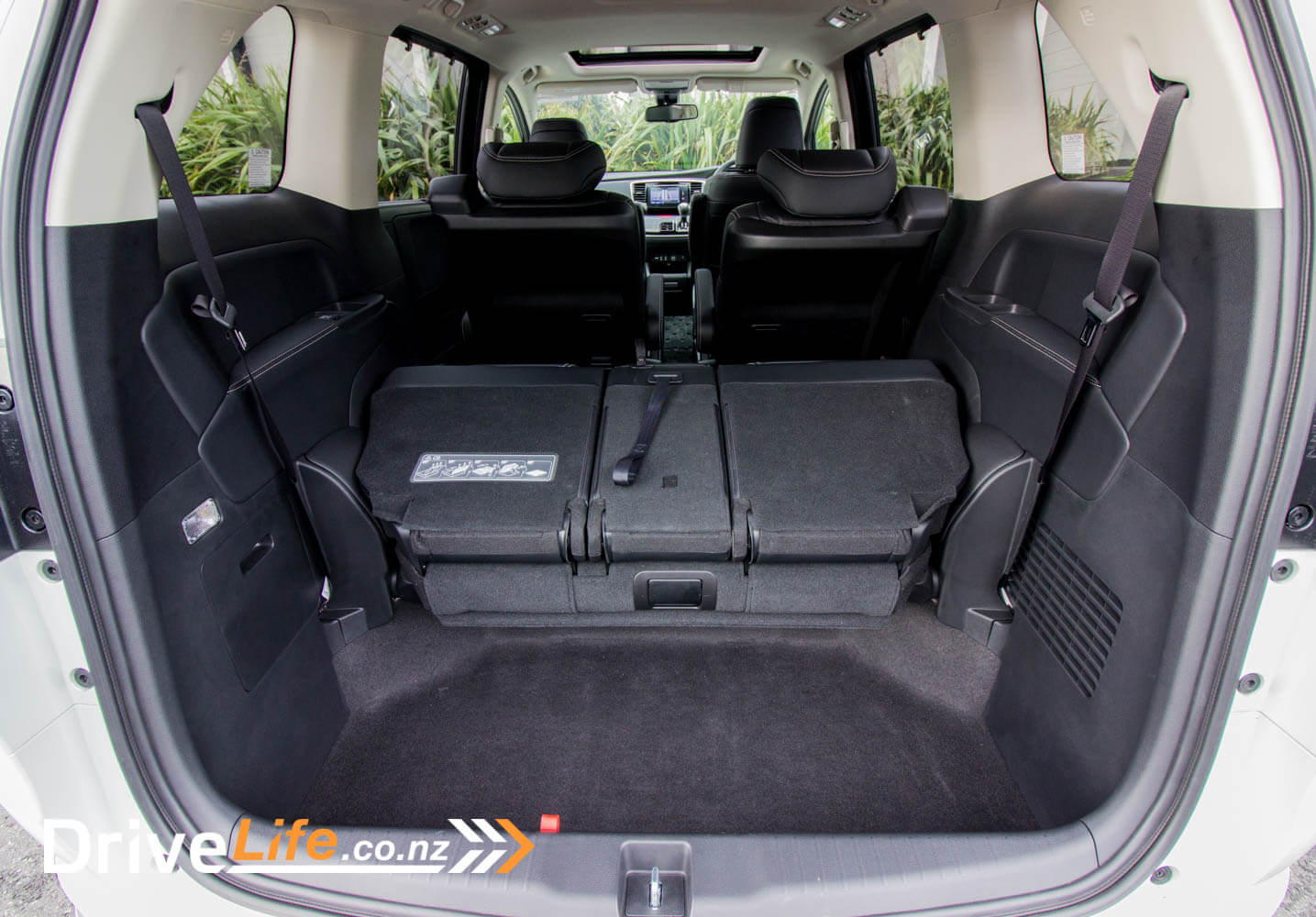
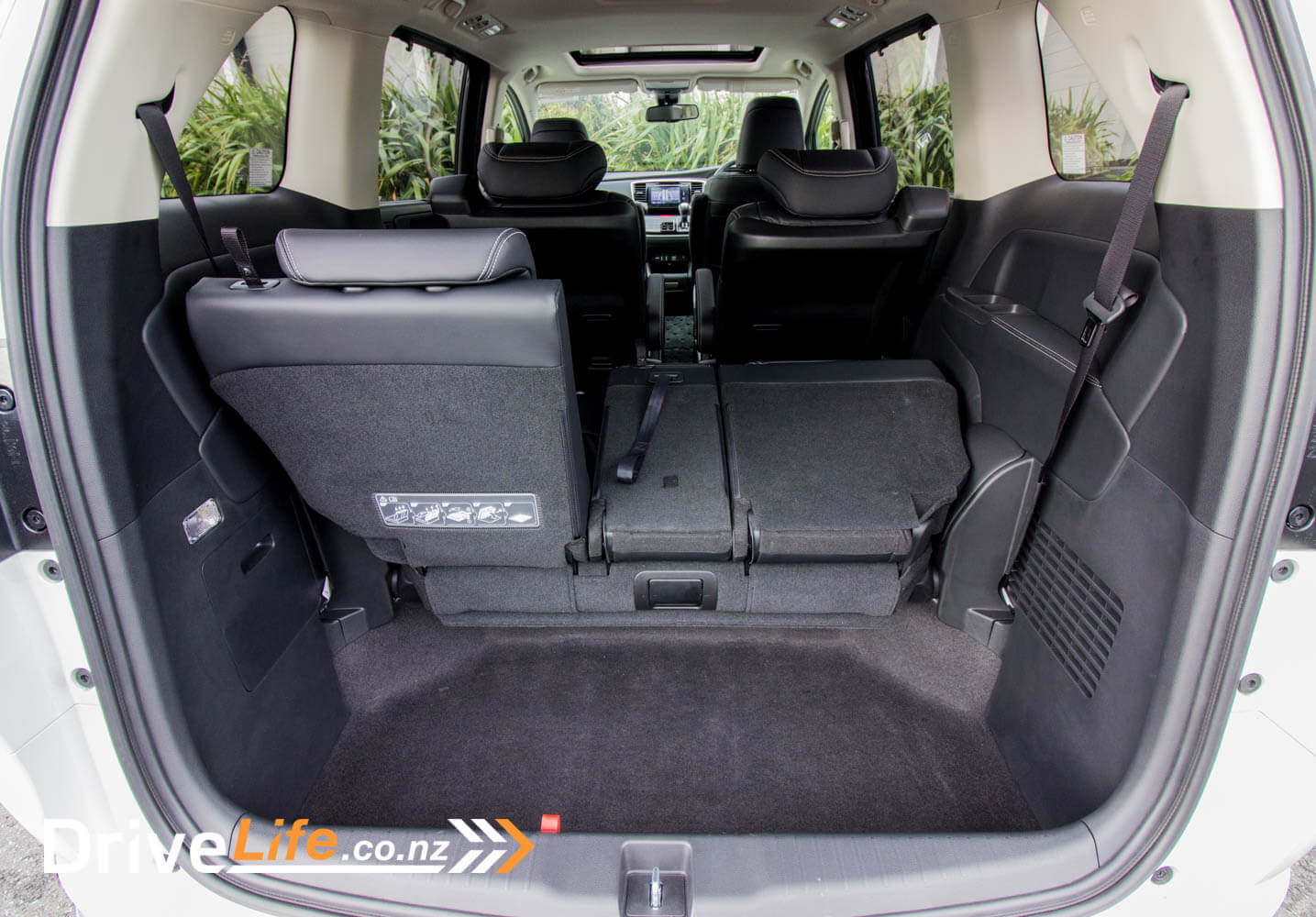
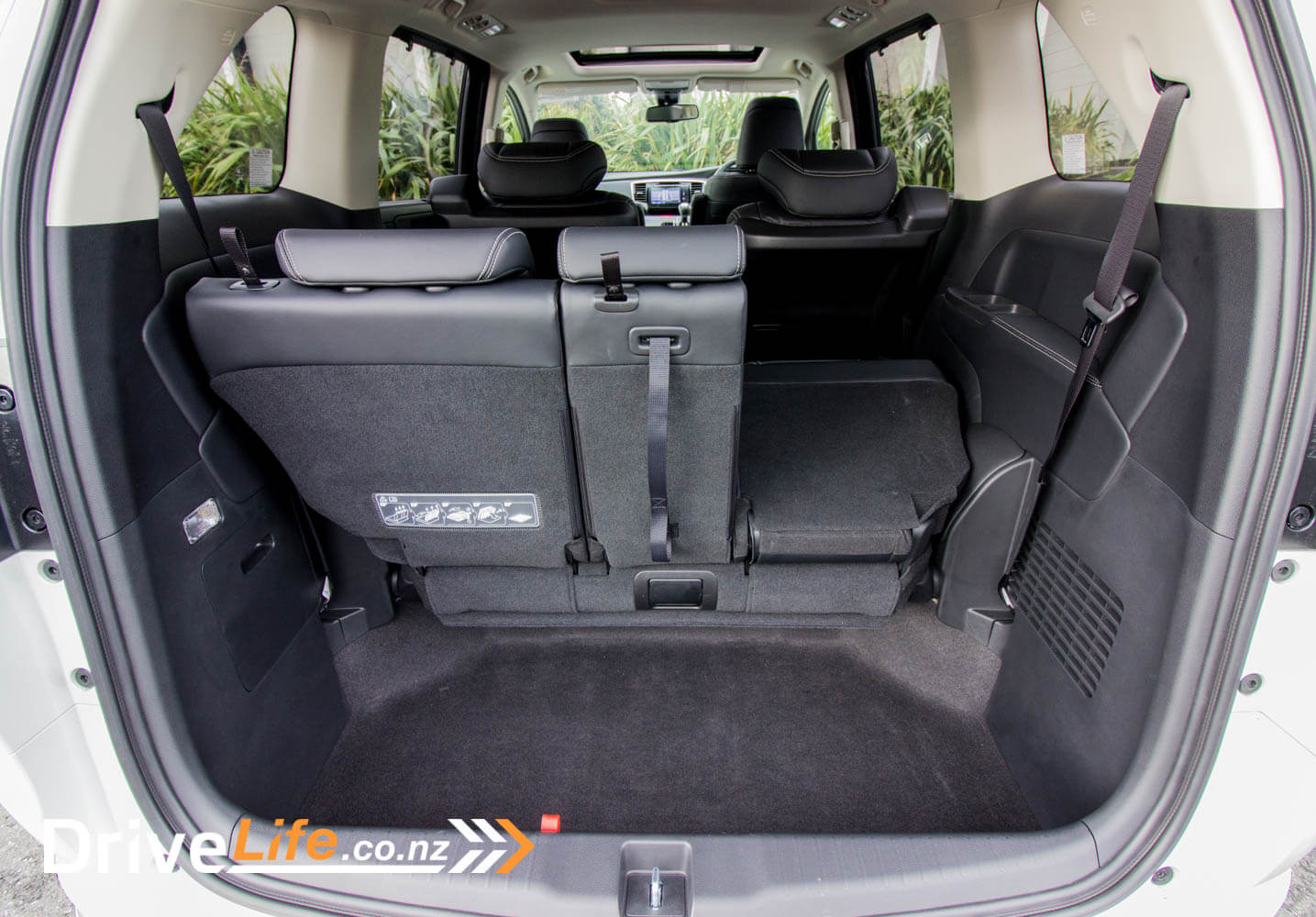


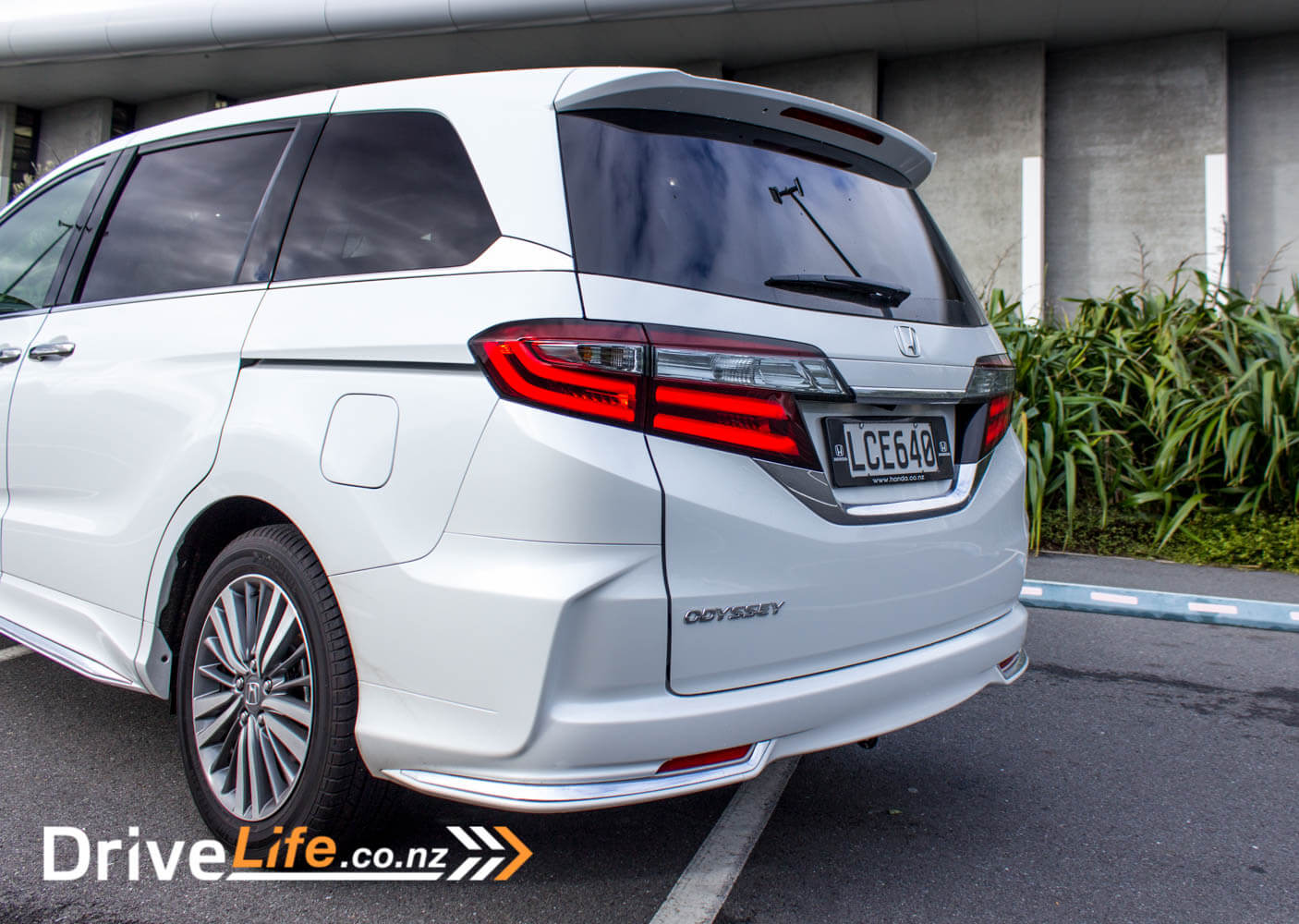
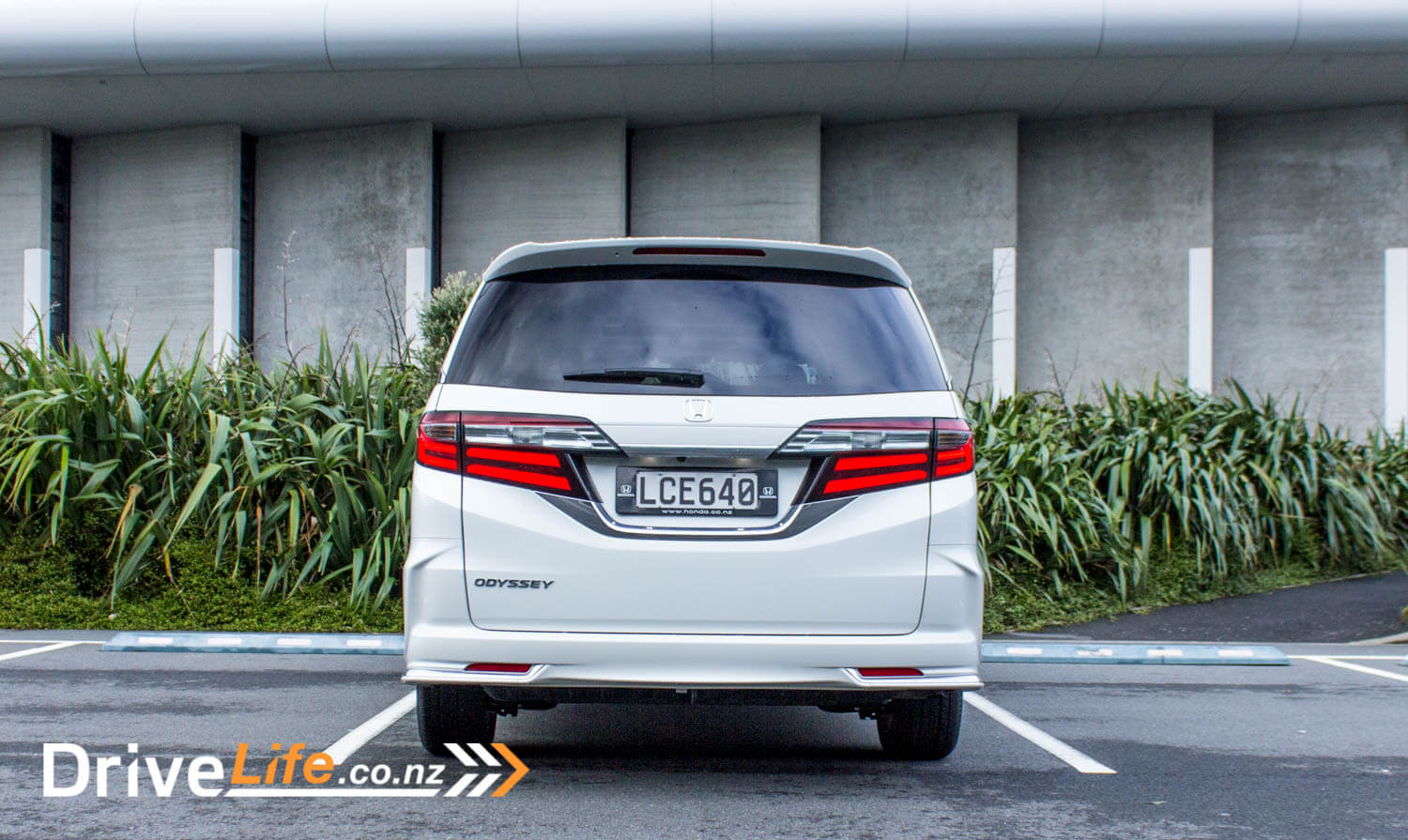
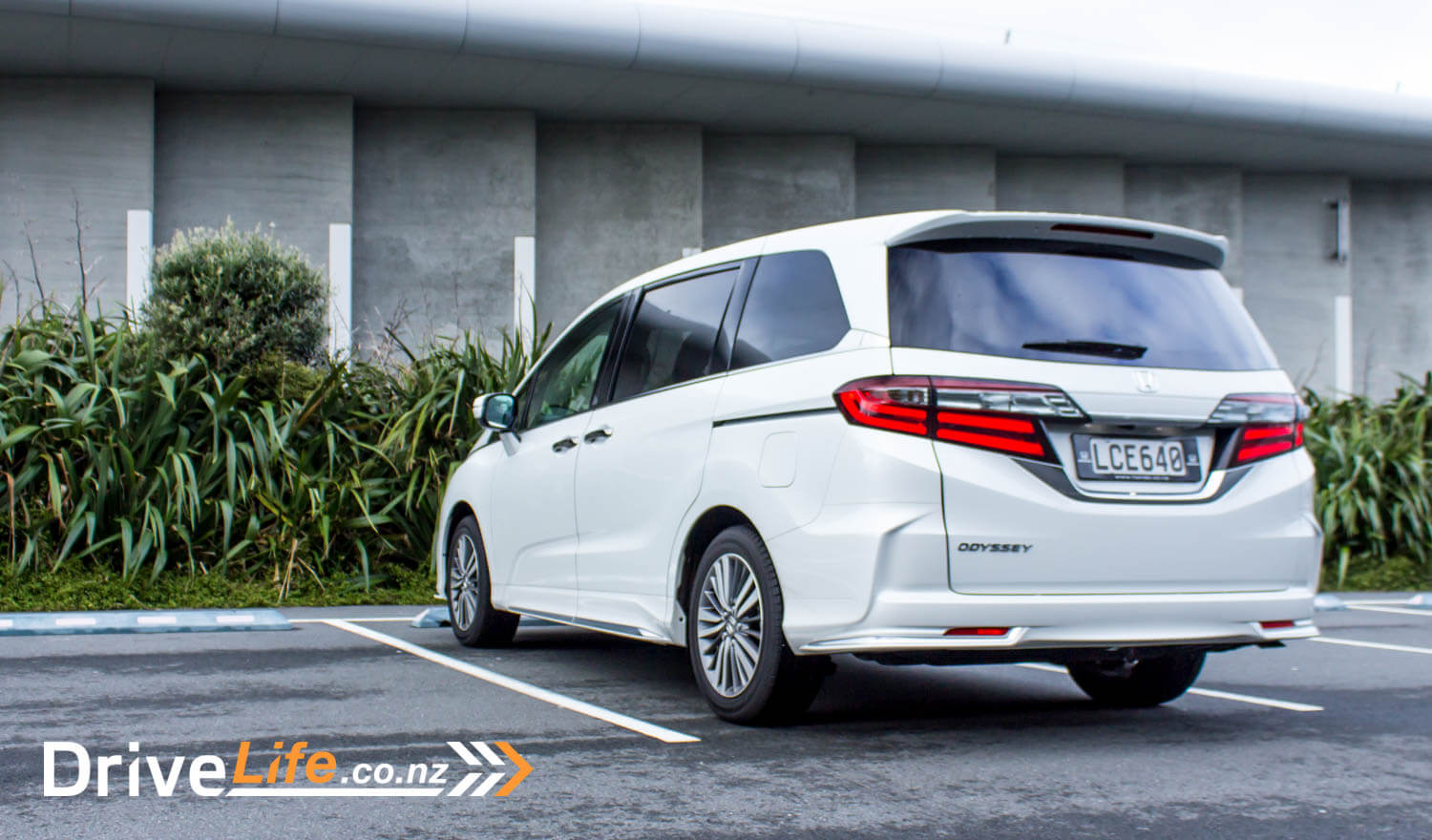
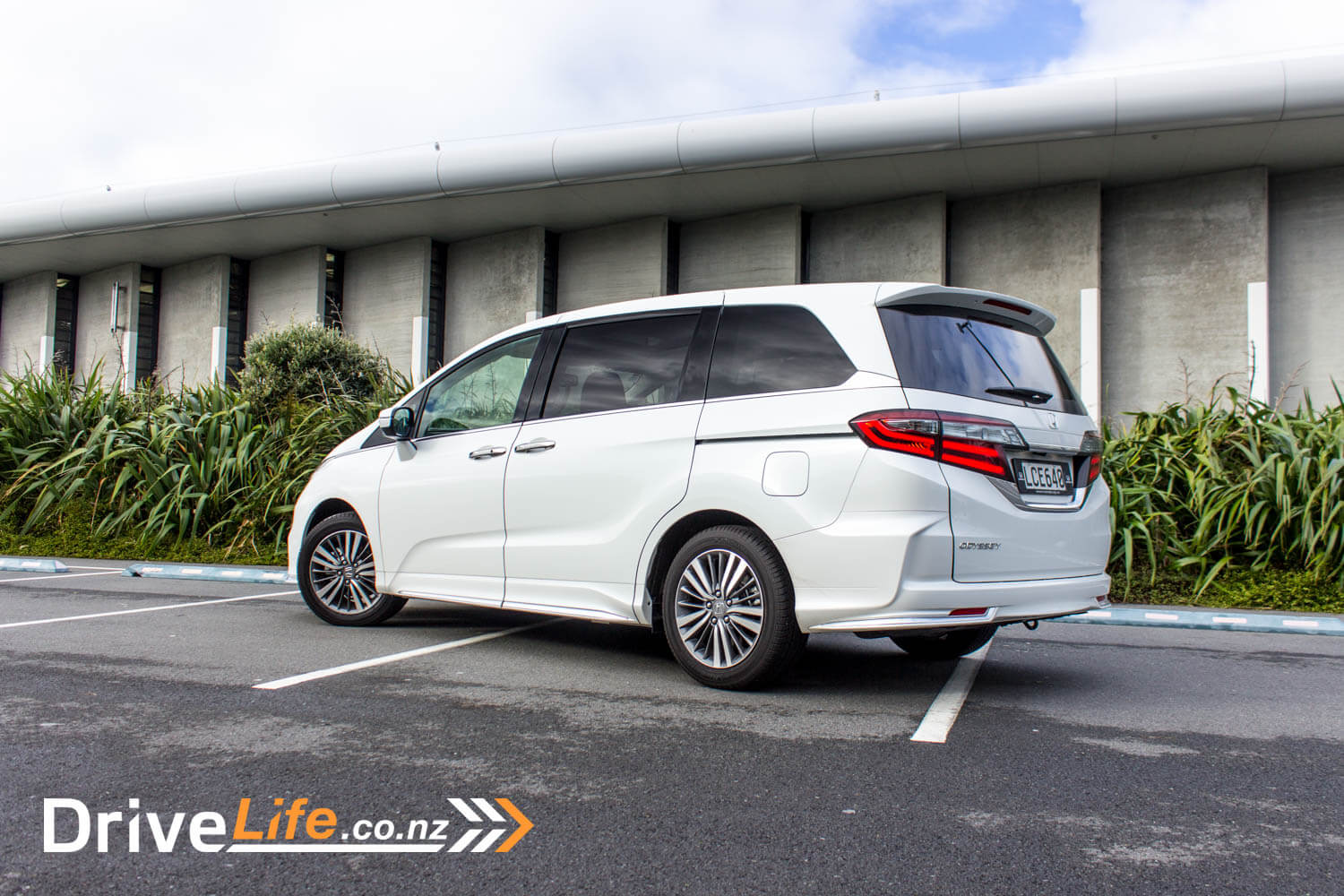
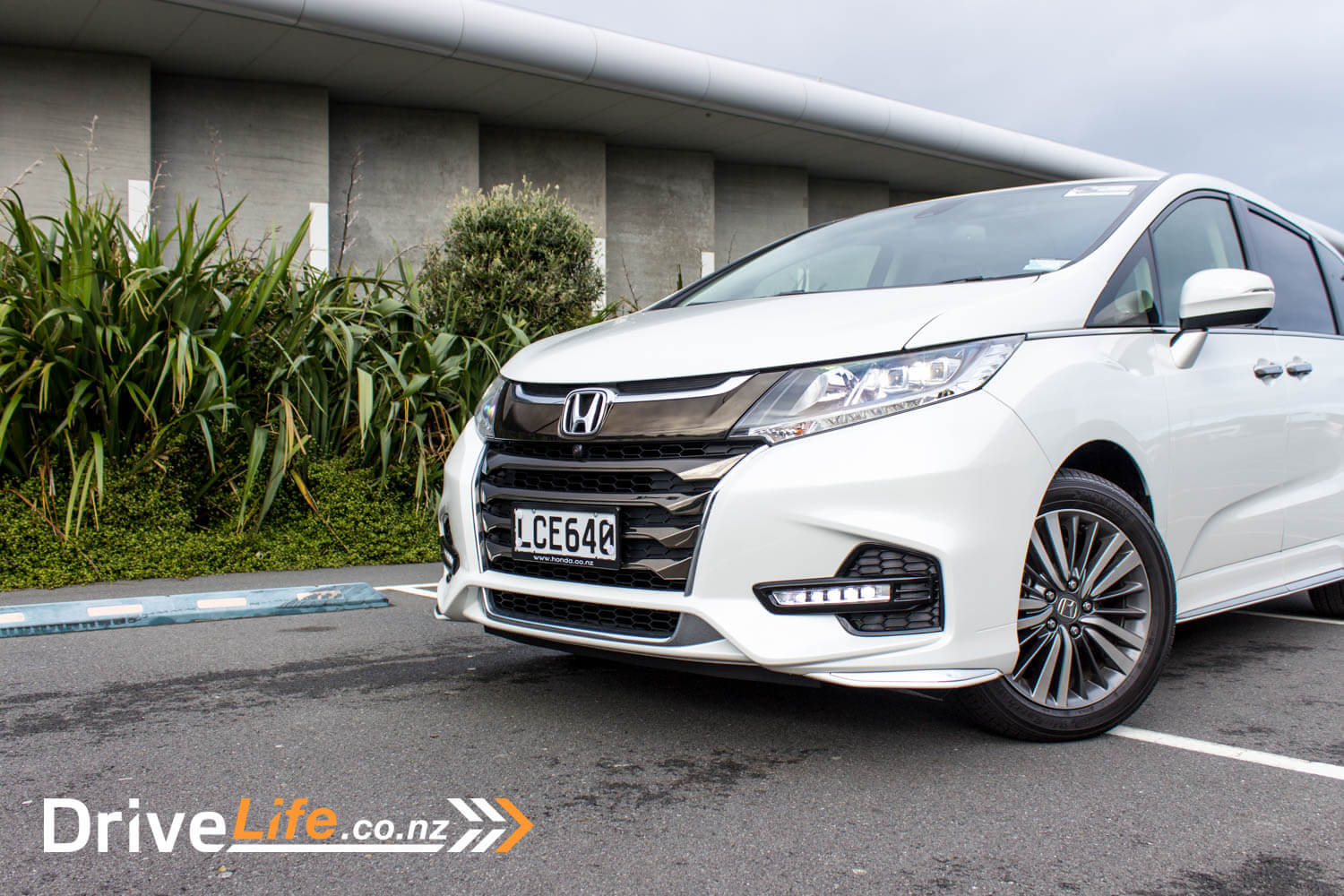


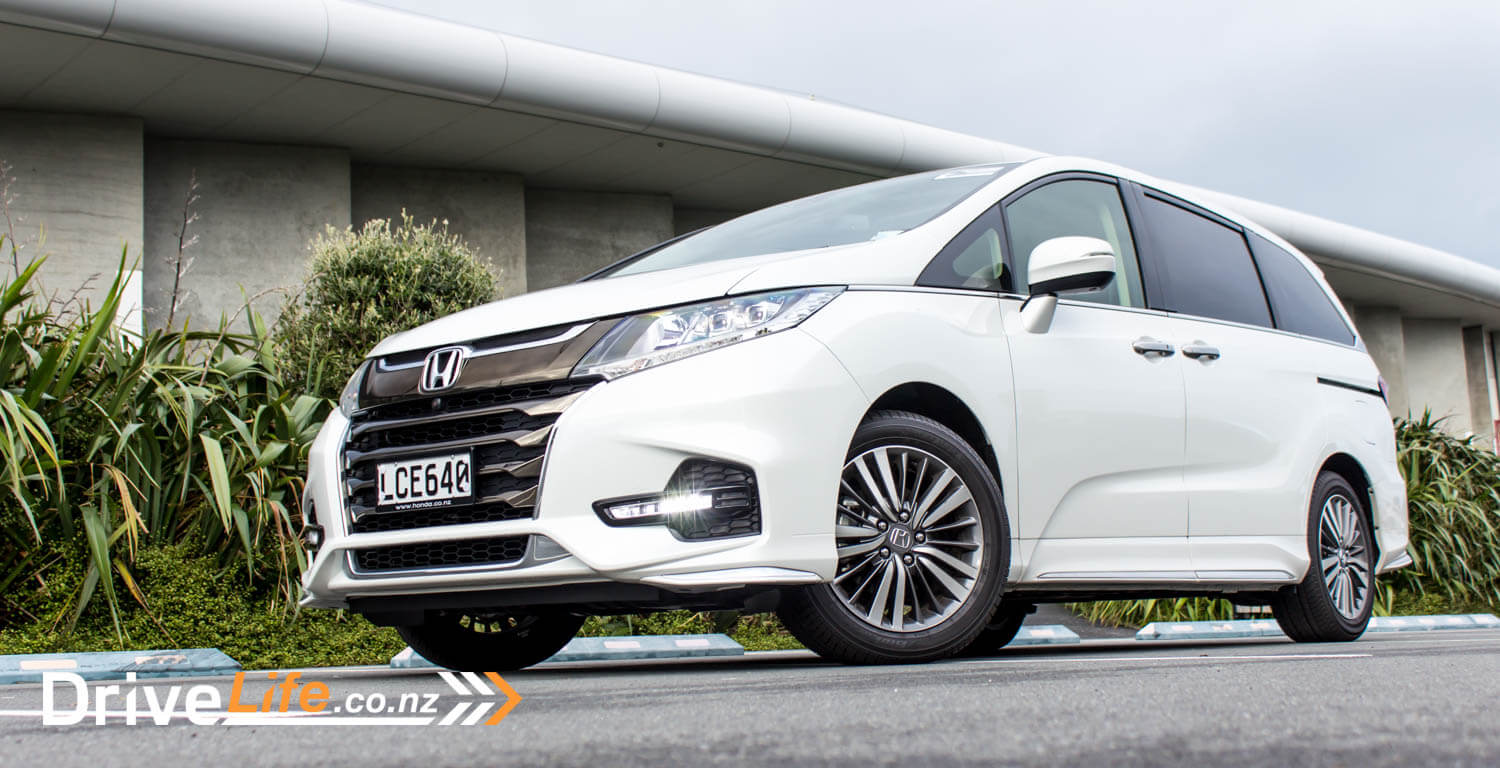











































When the 3rd row is stowed into the floor, the second row chairs move sideways to allow them to be pushed all the way back to the end of the railing, giving the passengers business class like of space. The 2nd row ottoman chairs can recline to 180 degrees flat for maximum comfort.